Tag: imported From Under The Deer
March 28, 2018
-
Guest Album Review – “Kid A” by Radiohead
This guest review was originally part of a music blog project I created called Under The Deer. Since that site won’t be around forever, I’m archiving these wonderful reviews and their accompanying illustrations here. Writer and illustrator listed at end of the review.
Radiohead might be the best band since The Beatles. For sheer range of effect, lyrical subtly, sonic virtuosity, and philosophical weight, they have come to define (and redefine) the last twenty-three years in popular music—first with The Bends, a spacey pop-rock masterpiece that featured such classics as “Fake Plastic Trees,” “Just,” “My Iron Lung,” and “Street Spirit,” and then with their most popular—and, some would say, greatest—album, OK Computer, which cemented their reputation as innovative rock gods. “Karma Police” and “No Surprises” are beloved by fans and non-fans alike, and “Paranoid Android,” which was voted the Best Song of the Last 15 Years by NME, has become a concert staple, along with “Exit Music,” “Let Down,” and the ironically titled “Lucky.”
Since 2001, Radiohead has released five albums, among them Amnesiac, their most challenging, jazzy, and (arguably) disjointed album, featuring everyone’s favorite downer, “Pyramid Song,” the hypnotic “I Might Be Wrong,” and the album’s closing dirge, “Life in a Glass House.” Hail to the Thief, the band’s protest album, which was seen by many as a return to form—at least their 90s rock form—gave us their first radio-friendly single in years (“There, There”) as well as “2 + 2 = 5,” a ferocious head-banger, and undervalued gems like “Backdrifts” and “Wolf at the Door.”
In 2007, Radiohead released their most crowd-pleasing album to date: In Rainbows, a nearly flawless 43 minutes of foot-stompers (“Jigsaw Falling into Place,” “15 Step,” “Bodysnatchers”) and tender ballads (“House of Cards,” “Nude,” “All I Need”), not to mention the band’s best song (“Reckoner”) as well as their saddest (“Videotape”). Their much-anticipated follow-up, The King of Limbs, however, was more problematic. The first half contained badly mixed, oddly static tracks like “Bloom” and “Feral,” while the second half featured the warm and groovy “Lotus Flower,” the gorgeously sad “Codex” and “Give up the Ghost,” and the genuinely uplifting “Separator.”
2016’s A Moon Shaped Pool was a welcomed change of pace, combining the emotional intimacy of In Rainbows with a new string-heavy aesthetic—both acoustic and orchestral. Songs like “Burn the Witch,” “Identikit,” and “Ful Stop” reminded listeners that Radiohead still knew how to rock (albeit in new directions), and the delicate, swooning violins of “The Numbers” provided a classical counterpoint for the album’s piano-driven highlights: “Daydreaming,” a lush, sparkling search for lost time, and “True Love Waits,” the dark, melancholy twin of a live track recorded nearly fifteen years before.
Needless to say, any number of albums could be considered Radiohead’s “best”.
Most choose OK Computer, for obvious reasons, while many younger fans prefer In Rainbows’ warm accessibility to the harsh, cerebral satire of the 1997 game-changer. Meanwhile, jazz nerds love Amnesiac, classical buffs celebrate Radiohead’s latest effort, and political activists—railing against everything from pollution to corruption—tend to favor Hail to the Thief. Some even prefer the sometimes-soft-sometimes-hard-rock vibe of The Bends. No one, however—including Radiohead themselves—likes their debut, Pablo Honey, enough to rank it first (or even second or third—or, for that matter, fourth or fifth), and, despite its moments of brilliance, few would rank The King of Limbs much higher.
There is one album, however, which has so far gone unmentioned: Kid A. Rolling Stone ranked it the best album of the 2000s, as did Pitchfork, who gave it not one, but two elusive 10/10s—the first upon its initial release, the second after its recent reissue. The idea, in 1999, that Radiohead could not just match but transcend OK Computer seemed unlikely, akin to asking Pink Floyd to top Dark Side of the Moon, yet one year later that’s exactly what happened—and not by making OK Computer: Part Two. Instead, Yorke and his not-so-merry band of brothers traded their guitars for keyboards, tossed their non-rock-related influences—such as jazz, electronic, and classical—in a blender, and poured out a bizarre, unnerving puree of sonic experimentalism.
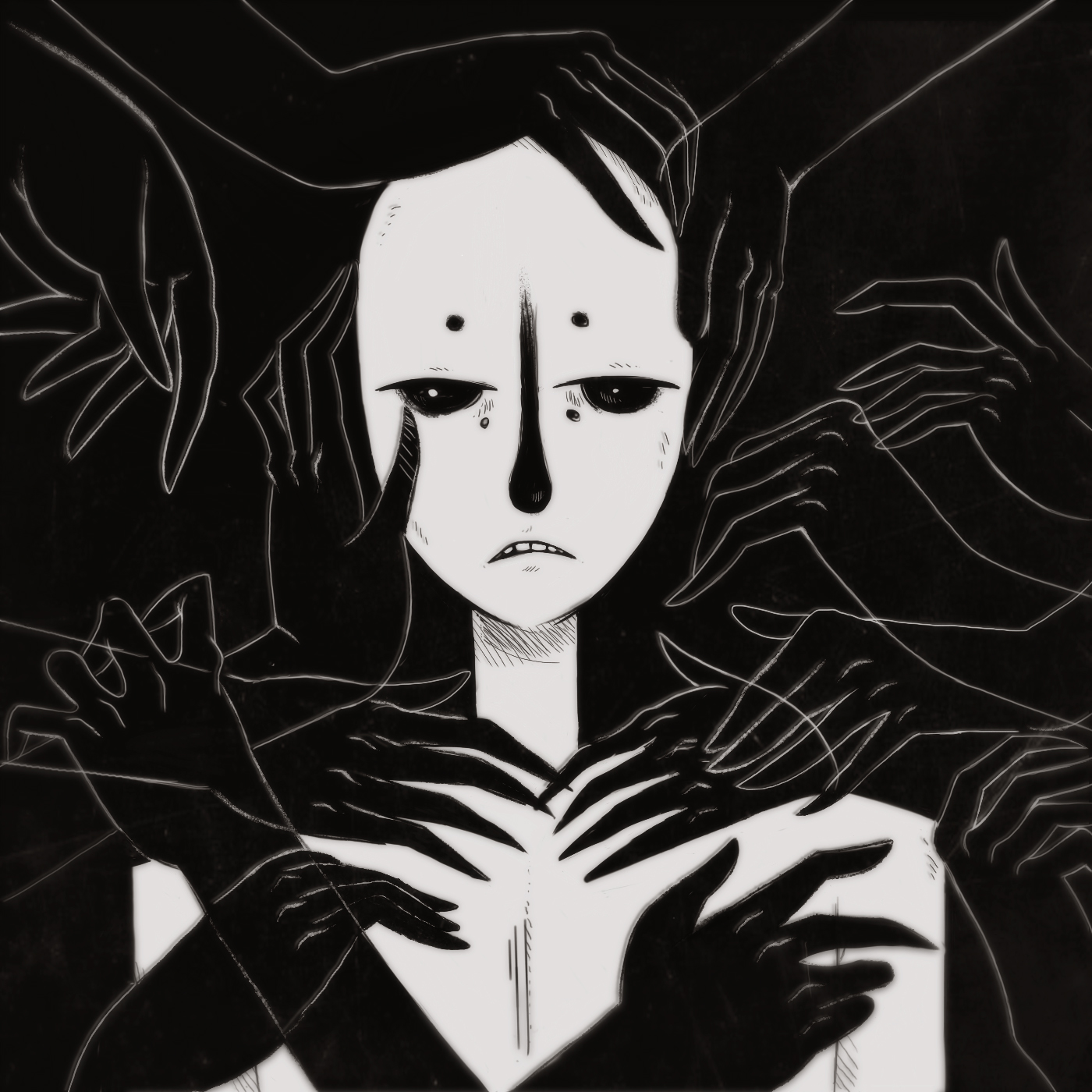
The opening track, “Everything in Its Right Place,” launches the listener into an otherworldly—yet strangely familiar—soundscape. “Everythiiiiinnnnng, everythiiiinnnggg,” Yorke croons, his gentle, nasal falsetto floating from syllable to syllable, caressing you into a kind of demonic trance. Right away, you sense a hint of irony in the title: everything is either not in its right place or in its right place, but in a bad way—a theory reinforced by the subsequent lines: “Yesterday, I woke up sucking a lemon…There are two colors in my head…What was that you tried to say, tried to sayyy, tried to sayyyyyyyy?” (A good question, which the song seems to ask itself.) Clearly, we’re not in Kansas anymore—or are we? Many of us, no doubt, feel upon awakening like we’re “sucking a lemon,” both literally and metaphorically: morning breath, morning ennui. Life leaves a sour taste in the mouth, especially when you’re tired and reluctant to meet it. The “two colors” in Yorke’s head seem to suggest anxiety—conflicting thoughts, self-defeating desires—or a kind of depression-inspired monotony: life in black and white, the world deprived of meaningful gradations. The final line, which both bludgeons you into submission and catapults you toward the sublime, connotes an inability to communicate and thus connect with other minds. Isolation, alienation, frustration—this song (and Kid A) in a nutshell.
The title track continues in a similar vein, this time with Robot Yorke taking over the vocals, followed by “The National Anthem,” which externalizes the themes of its predecessors, shifting the focus to “everyone around here,” who is “so near,” who has “got fear,” and who is “holding on.” The thudding baseline and crashing cymbals suggest a more traditional rock song but don’t be fooled: two and a half minutes in, the track becomes an extended jazz freak-out, inspired by the more chaotic side of Charlie Mingus. The next tune, “How to Disappear Completely (And Never Be Found),” pulls a sonic U-turn, trading everything electric for their acoustic counterparts—not to mention slowing the tempo, softening the tone, and filling out the folk-infused texture with wailing organs and heavenly vocals. The lyrics are as plain and authentically painful as the title suggests (“That there, that’s not me…I’m not here…This isn’t happening”), and during the cathartic crescendo the sadness—as well as the volume—gets turned up to eleven.
“Treefingers,” on the other hand, barely moves. More tone poem than song, it provides an ambient respite from the emotional swings and existential roundabouts of everything that came before. Tonally, it returns to the icy, tranquil terrain of “Kid A,” lulling you to sleep before shaking you awake with “Optimistic,” the most (ironically?) upbeat track on the album. Although the lyrics are mostly sardonic, the refrain has the trappings of sincerity: “You can try the best you can…The best you can is good enough,” which is then undercut by “I’d really like to help you, man”—the prelude to a flimsy excuse. Vague enough to imply everything, Yorke could be singing about the state of the world or the state of your soul, and, in this case, the ambiguity is reassuring. One senses light breaking through the Kid A clouds.
That is, until “In Limbo” starts, and you’re thrust back into hell. No song so aptly embodies the sensation of mental instability. The awkward, atonal structure, the cacophonous chords and mismatched layers of instrumentation—everything underscores the sensation of “living in a fantasy life,” if by “fantasy” Yorke means delusions and nightmares. Internal Hell then gives way to External Hell, as we abandon Yorke’s psychological limbo for the bleak and bare terrain of “Idioteque.” One of Radiohead’s few dance-inducing tracks, this visionary gem is equal parts catchy and jarring, hypnotic and disturbing. The lyrics, comprised of apocalyptic sound-bites (“Ice age coming…Who’s in the bunker?…Women and children first”), overshadow a soul-crushing beat and spine-tingling tones, sampled from the early days of electronic music. The ethos of the age is also evoked in phrases like “take the money and run,” “I haven’t seen enough,” and “I laugh until my head comes off.” The most haunting line, however, is the most apparently harmless: “Here, I’m allowed everything all of the time.” Our permissive culture—ecologically, economically—has created a world of self-obsessed, hedonistic anti-citizens (an “Idioteque,” if you will) hell-bent on bending things until they break. A century-defining song, “Idioteque” encapsulates our current predicament—as well as its inevitable outcome—more effectively (and more succinctly) than any dystopian novel or political text.
The penultimate track, which starts where “Idioteque” left off, is appropriately titled “Morning Bell.” The opening lyrics, “Morninnnn belllll, morninnnn bellllll,” sound like a nasal alarm clock designed to pull you out of a nightmare and thrust you into a waking one. Yorke’s repeated request to be “released” adds another layer of irony: released into the world or simply another dream—or an idealized combination of the two? The answer is unclear, but the album’s final song, “Motion Picture Soundtrack,” provides some ominous clues. From talk of “sleeping pills” and “cheap sex” to a longing for someone’s arms, it’s clear that this harp-filled lullaby isn’t meant to comfort. “I think you’re crazy, maybe” sums up the album as a whole: Kid A is surely the product of a troubled, perceptive mind with bleak ideas about the world and where it’s heading, but if Yorke and Co. sound “crazy,” it says more about the listener than the band—hence the qualifier “maybe.” At the end, Yorke sings, “I will see you in the next liiiiiiiiife,” and floats into the ether. Whether this signals a kind of death or the desired release of “Morning Bell,” it comes as a relief for the listener, who feels for the first time in 48 minutes that everything is finally in its right place.
Which begs the question: why listen to (let alone like) this dark and difficult album? Why is it considered by so many critics and fans to be the height of Radiohead’s achievement? Surely OK Computer is more accessible, In Rainbows more rewarding. Surely an album with three songs of questionable quality—“Kid A,” “Treefingers,” and “In Limbo”—can’t be considered a flawless opus. (“Treefingers” overstays its welcome, “Kid A” weirds itself out, and “In Limbo” does both.) Each is an integral part of the Kid A experience, but few Radio-Heads seek them out beyond the context of the album.
That said, Kid A flows seamlessly from song to song, idea to idea, emotion to emotion. It is unified and coherent, expansive and internal, visionary and down-to-earth. One could mention its pervasive influence, its blend of psychological insight and musical sophistication, or simply its jaw-dropping prescience, but the reason this album remains so revered is simple: it’s great in the way that Sgt. Pepper or Revolver is great. It lets you know you’re not alone; it shines some light (however dim) in the darkness. For ten tracks, Thom Yorke becomes a poet, a prophet, a political activist, a ghost, a robot, and a manic-depressive—in short, he becomes a person, a disenchanted, discombobulated citizen of the 21st century.
Contributors

Chris Gilmore is the author of Nobodies. His writing has appeared in McSweeney’s, Hobart, The New Quarterly, Matrix, and The Puritan. In 2017, he won the U of T Magazine Short Story Contest.

Rekka Bellum is an illustrator who lives, travels and works aboard a sailboat. Common illustration themes include fungi, root vegetables, skeletons and sad animal people.
March 27, 2018
-
Guest Album Review – “Floating Into The Night” by Julee Cruise
This guest review was originally part of a music blog project I created called Under The Deer. Since that site won’t be around forever, I’m archiving these wonderful reviews and their accompanying illustrations here. Writer and illustrator listed at end of the review.
“What do you see David? Just talk to me.”
“OK, Angelo. We’re in the dark woods now, there’s a soft wind blowing through some sycamore trees, the moon’s out, you can hear the hoot of an owl. Get me into that beautiful darkness with the soft wind. From behind the trees, in the back of the woods, there’s this lonely girl. Her name is Laura Palmer.
She’s very sad… That’s it! I can see her! She’s walking towards the camera!
She’s getting closer… Now she’s starting to leave… Fall back. Keep falling. Keep falling. Keep falling. Just go back into the woods…”
It’s a short video. We see Angelo Badalamenti behind his keyboard. He’s setting the scene. He plays an embryonic chord progression, narrating the events of an evening he spent with David Lynch. It’s a simple dialogue: Lynch describes the Twin Peaks of his mind as Badalamenti responds with melody. Lynch has a vision: a collage of imagery will slowly begin to converge into a coherent form, first as spoken word, and then, ever so subtly, under Badalamenti’s fingers. The result is frankly faint-making. The heart-wrenching song we heard was soon to become Laura Palmer’s theme in the now-legendary TV show Twin Peaks, with Julee Cruise lending her velvety vocals to its studio version, aptly titled “Falling”.
David Lynch imagined a dark forest, Angelo Badalamenti made a lonely girl manifest in its darkness, and Julee Cruise came to be the soft wind, rustling the Sycamore leaves into a reverberant nocturnal hush. With lyrics by Lynch, music by Badalamenti, and vocals by Cruise, the trio wrote an alleged 40 songs, only ten of which appeared in the final track listing of Floating Into the Night.
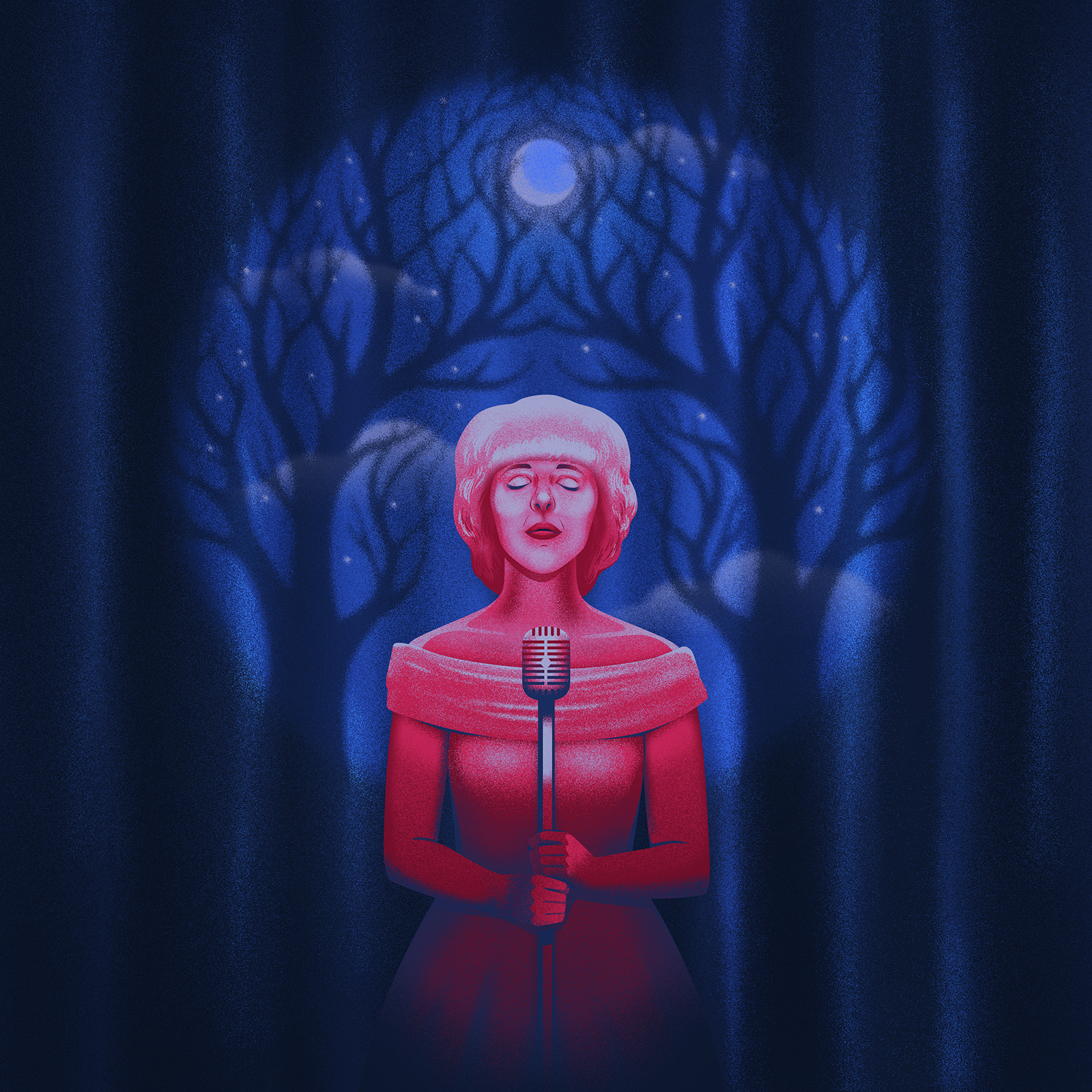
Julee Cruise’s Floating Into the Night has haunted me for years. It’s an incredibly misleading album. At first, its warm tones, intermittent mellifluous brass and omnipresent wall of synthesizers might sound comforting; But it doesn’t take long to find deeply unsettling truths at its core, an uncanny sense of discomfort that can’t be shaken easily.
But First, let’s take a few steps back to look at the bigger picture. During the production of David Lynch’s Blue Velvet (1986), when the rights to This Mortal Coil’s rendition of “Song to the Siren” proved too expensive, Angelo Badalamenti was tasked with recreating the same dreamy quality in an original composition of his own. Having previously worked with Julee Cruise, she was to become the vocalist for “Mysteries of Love”, a song that appears in Floating Into the Night a few years later.
Though Lynch had received critical acclaim previously, it was Blue Velvet that truly brought his obsession with small-town America to a wider audience. Lynch was to become a household name in American arthouse cinema; injecting new vigor into the independent film scene. David Lynch has been discussed ad nauseam, but to further understand the underlying structure of Floating Into the Night, certain aspects of his work need to be discussed.
Born in 1946, the post-war economic growth was to be the eerily optimistic era in which Lynch spent his childhood. We’ve all seen the posters, we’re familiar with that smile: the docile smile of a white middle-class housewife, selling a wide array of products. Most of us have heard the pop songs as well; men with sonorous voices singing songs of sophomoric love, or women with schoolgirl voices singing of “being a fool”. The fetishization of the docile All-American, smiley housewife was at its pinnacle, and the Second World War provided the perfect excuse for capitalism. Capitalism was to become the American way, and consumers were patriots who actively fought the looming threat of communism.
Lynch was born in a small town in Montana, but his father’s job required him to move around the country, often settling in small towns. American suburbia was the poster boy for the American dream; safe streets, white picket fences, disposable income, impeccable gardens and beautiful rosy-cheeked families who spent their free time being consumers.
Now let’s fast forward a few decades. It’s 1986 and we’ve just bought tickets for Blue Velvet. Bobby Vinton’s “Blue Velvet” plays as we watch a seemingly disconnected collage of imagery: We see a clear blue sky. We see a white picket fence ornate with red roses. We see the local firefighter and his dalmatian ride through the lane, waving to the camera with a Cheshire Cat grin. A housewife watches a murder mystery on the television as her husband mysteriously falls to his death while watering his plants in the garden. Bobby Vinton’s voice fades out so we can hear the sound of insects swarming in the soil. Later, a man walking through the grass finds a dismembered ear being devoured by ants. Lynch gives new meaning to the word “eerie” (pun intended!) and brings the unsettling truth of American suburbia to the fore. The discomfort of the pain and suffering underneath that omnipresent smile that has erased the working class from pop ephemera.
Now let’s fast forward to 1989 and start listening to Floating Into the Night. The words are rather simple: trials and tribulations of young love in the style of fifties lounge singers. However, there’s one minor tweak that makes a world of difference: the recurrent mention of “night” and “darkness”, words eerily absent from songs of this ilk. It would be a stretch to pseudo-philosophize and immediately make connections that may or may not have been intended, but for me, this is where the album begins to make a statement.
It’s the Eighties. Our post-war kids have grown up. They have children of their own. It’s their prom night. They dance in circles under the disco ball as Julee Cruise sings “floating into the night” from start to finish. They float in the “night” ironically absent in the tapestry of the American “Dream”. They now dance in the viscosity of the night, the advent of their “Dream” to come.
It’s no coincidence that this album was deemed one of the pioneers of “dreampop”. The soothing wall of sound, with its synthetic, oohs and aahs, helps set a romantic tone for a slow dance, a looming kiss, intermittently interrupted by subtle hints that this is not the All-American prom night they’ve been promised throughout childhood.
The third Track “I Remember” starts slow and soothing, with a soft saxophone solo in the middle.
I remember your smile
And the way you sent it to me
So many times through different air
It lives inside my heart
And suddenly, discordant bells chime, taking us out of that comfort with unexpected words and disharmonious melody
Is it a dream?
You and me
It can’t be real
“Rocking Back Into My Heart” has a strange few lines that can be easily missed. The chorus repeats a few times:
I want you
Rockin’ back inside my heart
But before the second verse we hear:
Shadow in my house
The man, he has brown eyes
She’ll never go to Hollywood
Love moves me
I’ve ruminated upon the implications of this album for years; perhaps overthinking, overanalyzing. As a millennial, my second-hand nostalgia for the Eighties drew me towards Julee Cruise. I often listen to this album while walking through dark winter-stricken trails thinking of a passage from Emmanuel Levinas’ “Existence And Existents”:
“When the forms of things are dissolved in the night, darkness of the night, which is neither an object nor the quality of an object, invades like a presence. In the night, where we are riven to it, we are not dealing with anything. But this nothing is not that of pure nothingness. There is no longer this or that; there is not “something.” But this universal absence is in its turn presence, an absolutely unavoidable presence.”
“Night” is the ultimate unavoidable presence, of fears, of the omitted truths, of the forgotten, of the eluded fundaments of the human condition. And here, in this album, with a few soft chords, we slowly float away into its viscous night…
“That’s it! I can see her! She’s walking towards the camera!
She’s getting closer…
Now she’s starting to leave…
Fall back.
Keep falling.
Keep falling.
Keep falling.
Just go back into the woods…”
Contributors

Khashayar Mohammadi is an Iranian-born writer/toque-enthusiast based in Toronto. He is currently working as an editor for the independent publishing company Inspiritus press.

Cat Finnie is a freelance illustrator based in London, UK. She likes to create digital illustrations that have a surreal edge.
March 26, 2018
-
Guest Album Review – “Blade Runner Soundtrack” by Vangelis
This guest review was originally part of a music blog project I created called Under The Deer. Since that site won’t be around forever, I’m archiving these wonderful reviews and their accompanying illustrations here. Writer and illustrator listed at end of the review.
There is one album I’ve listened to more times than any other, and I discovered it in a way that is likely opposite from most listeners. As a child, my mother owned the soundtrack of a commercially unsuccessful science fiction movie that had come out before I was born. I would put it in an old, portable CD player and try to imagine what the movie looked like.
It began with an ominous, ethereal note and then, there was a voice.
“Enhance thirty-four to forty-six.”
A computer beeped, then there was a whirring noise.
“Pull back. Wait a minute. Go right. Stop. Enhance fifty-seven nineteen. Track forty-five left. Stop. Enhance fifteen to twenty-three. Give me a hard copy, right there.”
Then the music set in, with a glissando of what sounded like a space harpsichord and a fat, synthesized sense of mystery. It would be years until I would see Harrison Ford speak these words, or understand their significance in relation to the film’s narrative. Yet I wore that disc out, playing it over and over again. To this day, every time I watch Blade Runner, those familiar notes give me chills. Director Ridley Scott, who chose Vangelis to compose the score after hearing his Academy Award-winning work in Chariots of Fire, said, “Fundamentally, in a sentence, I’ll say [Vangelis] was the soul of the movie.”
Though Blade Runner is an 80s film, the music sounds timeless to me. I think of Amazon’s Electric Dreams, based, like Blade Runner, on the sci-fi fiction of Philip K. Dick. The episodes lack the acerbic darkness of Black Mirror, possibly because instead of being set in a bleak future the people of 2018 can imagine, they’re set in the future the people of the mid-century imagined. Blade Runner and its score feels the same way to me: someone else’s dystopian future, both beautiful and haunting.
The Blade Runner soundtrack was not released until a dozen years after the movie, in 1994. There had been bootleg versions, but this official release was the one I had. It wasn’t in chronological order. Some of the songs from the film were missing, and some tracks not featured in the film were included. “Rachael’s Song,” my favorite piece and one commonly associated with Blade Runner, was never used in the film. Here, Mary Hopkin’s melismatic vocals convey a range of emotion as they swirl over lush synth. As a kid, I would imagine a siren on a gray and rocky islet, beckoning to a passing ship. “Memories of Green” was warmer, its tinkling piano seeming to convey something fragile and important, though the futuristic whirring and beeping, combined with the title, indicated that whatever it was had long disappeared.
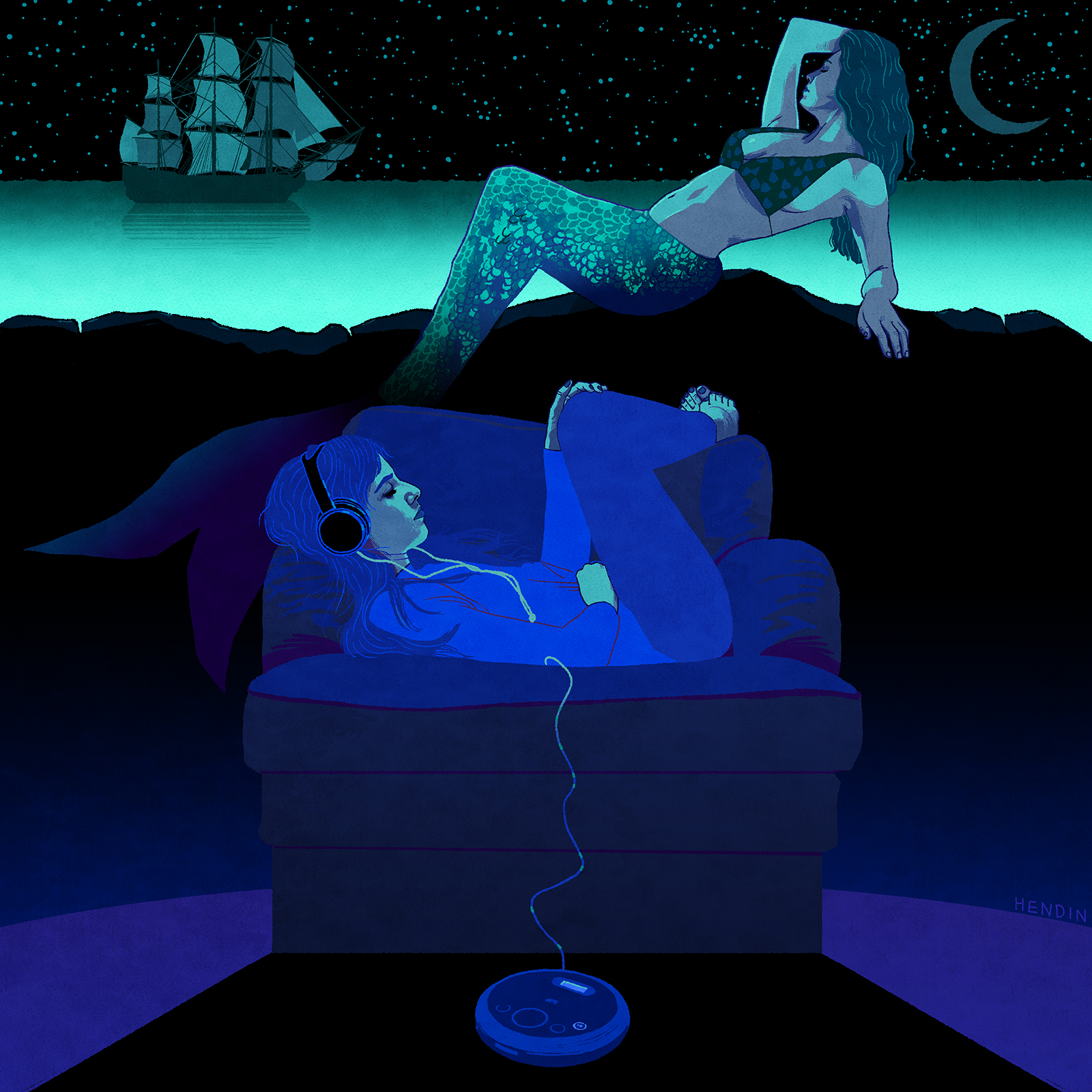
Mid-album, there was a song that felt older, as though it was meant to be played on a tinny radio or a parlor Victrola. “One More Kiss, Dear,” it was called, and I soon learned all the words. Scott had initially imagined The Ink Spots’ “If I Didn’t Care” (1939) for the film, yet Vangelis was able to offer an original that sounded as though it were written 40 years earlier. Peter Skellern provided the lyrics, and, interestingly enough, would later form a group called Oasis with Mary Hopkin. Not that Oasis.
“End Titles” is perhaps the only track that felt like the 80s to me, with its insistent synth bass line, made more fervent by bombastic timpani. The final track, “Tears in Rain,” was so majestically sorrowful—a simple and slow melody fading, like Roy Beatty, into obscurity.
Some of the songs were, dare I say, better without the film. The noir “Love Theme,” featuring a bawdy saxophone solo by Dick Morrissey, could be construed as romantic on its own. At the very least, it was one of the only tracks I listened to that didn’t conjure a sense of vast isolation. Yet in the film itself, Deckard aggressively coerces Rachael into a physical relationship; the scene was better in my head.
I know now that Vangelis’ score and the film are both iconic, important pieces in their respective worlds. I know that falling in love with this album was a portent for my teenage music tastes; specifically, the brooding computer music of Nine Inch Nails and Trent Reznor’s associated contemporaries. (Who am I kidding? I listen to Pretty Hate Machine and The Downward Spiral just as much as an adult.)
Yet as a kid, with no guiding narrative but the pulp album cover, these songs were an endless trove of imagination and wonder. Mostly wordless, void of lyrics save “One More Kiss, Dear” and the snippets of dialogue, I was free to build my own cinematic stories—even if I was just sitting in a rocking chair in a Midwestern home. I live in Los Angeles now, Blade Runner’s setting, little more than a year away from its starting date of November 2019. It doesn’t look anything like Blade Runner out here, but on those rare rainy days, I still put on this album and pretend.**Technically, I put on the 2002 Esper Edition, because we might not be anywhere near having hover cars in 2018, but we can stream it on YouTube.
Contributors

Juliet Bennett Rylah is a Los Angeles-based freelance writer with bylines including LA Weekly, Atlas Obscura, Nerdist, LAist, Time Out LA, and Thrillist. She’s a Halloween and cat enthusiast who loves a good monster-of-the-week TV show.

Rebecca Hendin is a multi-award winning freelance illustrator based in London. She worked as an in-house illustrator at BuzzFeed from 2015 through 2018 and is a nationally syndicated political cartoonist in the US. Freelance clients include BBC, Amnesty International, Google, Gimlet Media, New Statesman, The Nib, Politico, Island Records, Giphy, VICE, Donmar Warehouse, and more.
February 20, 2018
-
Guest Album Review – “Pinkerton” by Weezer
This guest review was originally part of a music blog project I created called Under The Deer. Since that site won’t be around forever, I’m archiving these wonderful reviews and their accompanying illustrations here. Writer and illustrator listed at end of the review.
Forget the Weezer you know today or the Weezer we were first introduced to back with their debut self-titled LP, now The Blue Album. That’s the one that gave us seminal nerd rock classics “Buddy Holly”, “Say it Ain’t So” and “Undone–The Sweater Song”.
If you want organic, free-range Weezer, Pinkerton is where it’s at. This is not to say the band hasn’t grown or evolved since 1996 or that the post-Pinkerton albums are unworthy of attention.
Rivers Cuomo, the arguably unlikely frontman of the arguably unlikely success that is Weezer, tried to distance himself and the band from Pinkerton. The same thing that made it uncomfortable for him made it the kind of album that turns casual fans into diehards. To listen to Pinkerton is to get a pretty visceral snapshot of where his head was at at that time. After 10 tracks and a scant 35 minutes, it feels like you’ve been offered an understanding of the then man-child that was and is the driving force behind Weezer.
More than that, Pinkerton changes the way you hear and perceive the rest of Weezer’s catalogue.
The album is named after the character in Madama Butterfly, the 1904 opera with which Cuomo, Weezer’s primary creative engine, was obsessed. Pinkerton (the character) is hollow, selfish and cowardly. Pinkerton (the album) details a man’s battle with the same perceived traits.
From the themes of Madama Butterfly to the Ukiyo-e album art to references to Cio-Cio San, and laid most bare in “Across the Sea”, there’s a budding interest in all things Japanese. It kicks in at key points throughout the album. Cuomo was otaku before otaku was defined in the Western sense of the Japanese word.
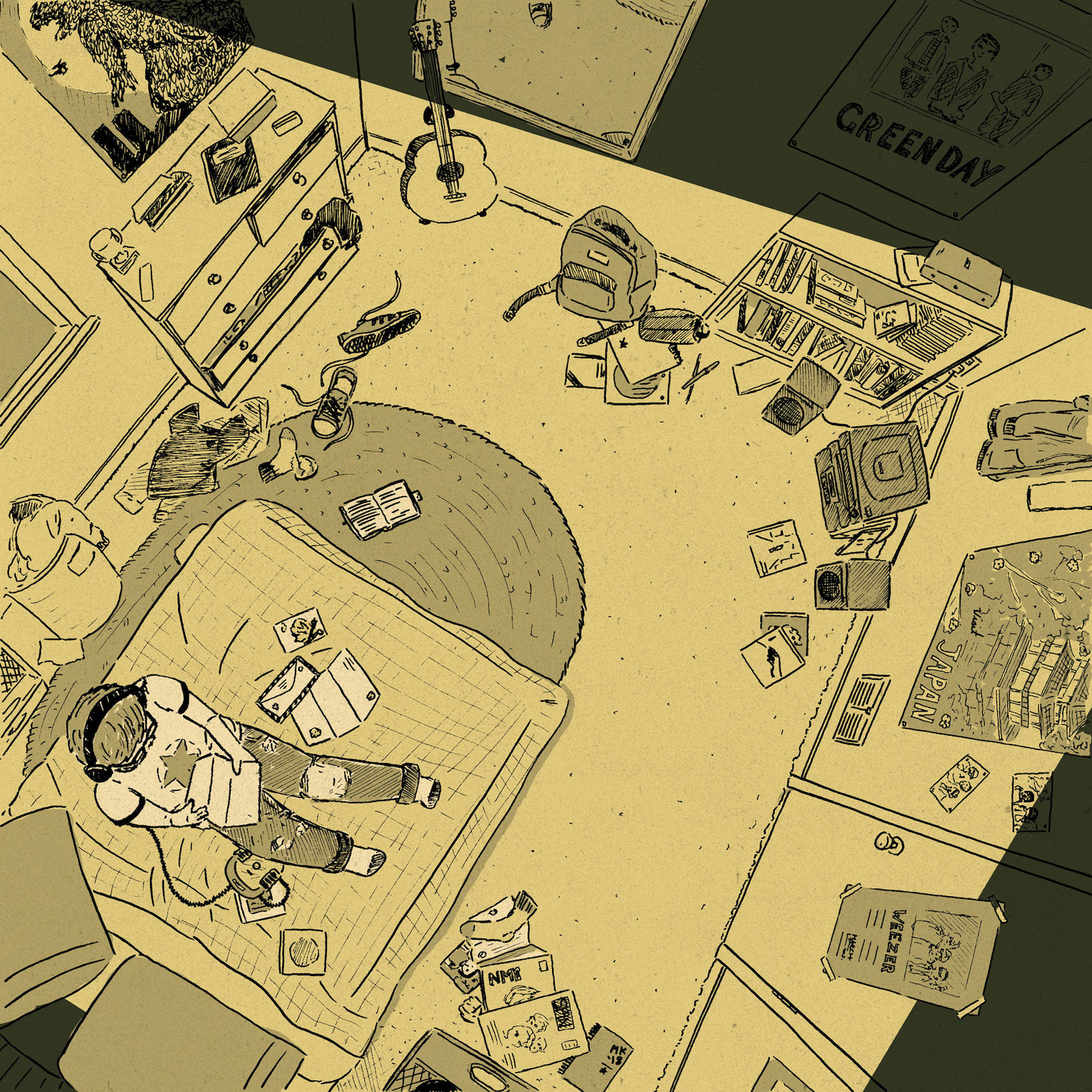
Lyrically, Pinkerton is a story of getting everything you thought you wanted and realizing it’s all a bit hollow. It’s the story of a man battling with himself as he works to reach some ideal that isn’t yet clear. The album isn’t maudlin, at least not musically. Present is the driving garage rock sound, courtesy (Patrick Wilson on drums, Brian Bell on guitar and Matt Sharp on bass) that typifies much of Weezer’s catalog; complex in its simplicity and vice-versa.
“Tired of Sex” kicks things off. You can probably figure out what the subject of that little ditty is. “I’m spread so thin I don’t know who I am.” Cuomo spoke in interviews about the less than glamorous realities of the glamorous rock star life. All throughout the album you hear and feel how it left him yearning for real connection. You can almost feel the furtive and ultimately unfulfilling interactions that give rise to the opening track.
“Getchoo” is the biggest hint of what future albums are going to sound like. That would be a more impressive statement if it were predictive instead of retrospective. It’s the story of someone who’s gotten used to getting what he wants but who then discovers that the tables can still be turned. From the bridge: “I can’t believe what you’ve done to me. What I did to them, you’ve done to me”
“No Other One” evokes feelings of a dysfunctional relationship as viewed through the eyes of someone with little relationship experience. The “One” in question doesn’t sound like a great partner in crime; more like the kind of person you get involved with and then stick around because fear and inertia take hold. Maybe her album would paint him in a similar light.
“Why Bother?” Part of me wishes that this (just like the rest of the tracks) didn’t bring something great to the table to make the album what it is. Then I’d be able to just say something pithy like “fair question” and move on. This is a song about not wanting to get out of your comfort zone. Of seeing something you think you really want but that you’ll never have if you can’t get over the fear of trying. I totally can’t relate.
“Across the Sea” is a song written in response to a Japanese fan letter. It starts off sweetly with a simple piano and (correct me if I’m wrong) shinobue flute. Then comes the heavy distortion over simple progressions that have always typified the band. If indeed Pinkerton offers a snapshot of where Rivers Cuomo’s head was at, “Across the Sea” demonstrates that it was a pretty confusing place at that time. The longest track on the album, it almost feels like two two-minute songs with a common thread.
“The Good Life” hits reset and says “alright, enough moping around. Let’s get back out there for some of that partying and empty sex we lamented as being ultimately unfulfilling.” It suggests maybe we’re changing gears. Maybe the back half of the album will be a little more carefree.
Not so much. Even in this song about pulling the leather rockstar pants out of storage (speaking figuratively, though if anyone could make that a good song, I’d put my money on this band) and going out to party bears the same longing and confusion as in all the other songs up to this point.
“El Scorcho” is a bit of fun but the same longing and loathing is still an undercurrent. If memorable opening phrases on a sophomore album lead single is ever a Jeopardy category, “what is Goddamn you half Japanese girls, you do it to me every time” is definitely making the board.
It’s coming from the same dark place as the rest of the album but the guitar is driving and lines about shredding on cellos and “I’m the epitome of public enemy” make it feel like a good old-fashioned MTV single.
“Pink Triangle” is a pretty good litmus for whether you’ll like the rest of the album. It unpacks the kind of infatuation that has one person building an entire relationship in their head, unbeknownst to the subject of the fantasy. It details the kind of non-relationship where the other person serves as little more than a prop. It comes crashing down when the fantasizer learns that the subject has a boyfriend or girlfriend, is not a great human, took an instant dislike to the person fantasizing. Whatever. In this case, the carefully constructed fantasy is shattered when we learn the subject is gay. Or, distilled: “I’m dumb, she’s a lesbian.”
“Falling for You” feels like the first song that isn’t laying bare some wound or weakness. I hope the fact that I’d call it the weakest link doesn’t say more about me than it does about the track.
The wrought acoustic “Butterfly” is the perfect way to end the journey. It feels like a thinly veiled metaphor for some deep wrong inflicted on an intimate friend. Or maybe it’s just Cuomo imagining Pinkerton apologizing to Cio-Cio San, aka Madama Butterfly, for being an asshole. The person that could shed light on this subject spent a long time pointedly not talking about the album, and interviewers probably have bigger, more current questions to ask.
Speaking personally, Pinkerton was a formative album. It gave me a new appreciation for and lens through which to see the band’s debut. The Blue Album can be written off as bubblegum without a deeper listen; a few hit singles, a quirky lead-off video with cute concept. Just the latest thing the industrial part of the music industry fed to kids after grunge arguably died along with one of its key icons.
Weezer helped the listeners realize that a nerd isn’t a one-dimensional character as typified in the previous generation’s pop culture. Pinkerton hit reset on what you thought you knew about Weezer.
Ask me if I like emo and you’ll get a knee-jerk no. Call me on that by pointing out that Pinkerton was kinda emo before emo was really defined and I’ll say well played, as I look sullenly out at you from behind the protective barrier of my Manic Panic Infra Red bangs.
Contributors

Andrew Moore-Crispin describes himself as a communicator, which might come as a surprise to those closest to him. He writes about all kinds of stuff (mostly tech) for all kinds of people (mostly people that are interested in tech). Music retrospective was a new challenge and one he was happy to be afforded the opportunity to tackle.

Mariel Ashlinn Kelly is an illustrator, designer, zinester and comics artist living in Toronto, Canada. She likes striped t-shirts, hanging out with her cat, and eating marshmallows straight from the bag.
February 6, 2018
-
Guest Album Review – “Big Boy” by Charlotte Cardin
This guest review was originally part of a music blog project I created called Under The Deer. Since that site won’t be around forever, I’m archiving these wonderful reviews and their accompanying illustrations here. Writer and illustrator listed at end of the review.
The Montreal singer and multi-instrumentalist, Charlotte Cardin, is my choice for the most interesting, most promising artist to emerge from a Canadian singing competition since Hedley started ruling the airwaves and Carly Rae Jepsen—who placed third on Canadian Idol in 2007—turned into a leading 1980’s pop revivalist.
After placing fourth on the first season of La Voix—the French-Canadian version of The Voice—in 2013, Cardin took the next three years to develop a style as eclectic and personal as it is accessible to mainstream listeners. On her debut E.P., Big Boy, this means upcycling pop music’s standard verse-chorus-verse song structure into a canvas for some of her strongest traits: confessional songwriting, nuanced vocals, and minimalist instrumentals that blend elements of jazz, electro, hip-hop, and R&B into grooves that’ll bob your head until it swims.

Cardin offers six songs that explore the end of love to a systematic degree, changing relationship scenarios in every song, and inhabiting the speakers with a gonzo-level of commitment that allows all of their edges to show. She is distinctive in her enunciation for being able to find new ways to bend words in the service of mood. In this way, she’s a jazz improviser, elevating Big Boy into catharsis, making words you use on a daily basis emote as you didn’t know they could.
The eponymous opening track is sultry R&B number directed at a lover who doesn’t want to take things any further than an initial tryst. Cardin delivers it with a taunting, playful tone, poking at the beloved’s lack of resolve, but also filling it with desire that betrays feelings yet to dissipate. All this is punctuated by some cascading hi-hats that back her up by being a total tease for the hypothetical recipient. She croons,
My boy is not a man yet
But boy, do I love it when you kiss my neck.
It’s the mania at having to sit with unreciprocated desire that she pulls off so well. She sounds like she is of two minds, wanting to give all of herself to the beloved but also to simultaneously take it away. The music reflects this division, the piano work awash in heavy brooding while the drums dance around her words like a devil on the shoulder.
A split mind becomes a major theme of the album and a major source of its humanity. Cardin’s protagonists aren’t afraid to express contraction amidst the anger and paranoia of their newfound solitude. We are listening to songs about people who were adored, who became integral parts of the speakers’ lives, and whose absences could entail nothing but apocalypse. There is something crushingly relatable about finding yourself to not be enough for someone and Cardin is continually tapped into it.
This is so on the single, “Like It Doesn’t Hurt” featuring Nate Husser, an electro-tinged banger that gets at the walls we put up with people who step unceremoniously out of our lives. Cardin is steely in her portrayal of the ache for a former lover whose embrace lingers like a phantom limb. Her cognitive dissonance is mirrored nicely in the lazy, pulsating synths and the dainty drum patterns they radiate from.
I’ve been around
Your body upside down,
But I can’t touch you,
In any fucking way.
She repeats this hook as if entranced by the false promises of longevity these moments of intimacy can contain. They feel too good to consider them never happening again, as opposed to their inevitably finite natures intensifying the experiences themselves.
Cardin has chemistry with Husser, who plays the lover, and whose rhymes are tightly woven with fragility hip-hop sorely lacks. The song is a picture of the unrefined anger of holding it against someone for letting their window to love you pass on by. As such, it is a moving take on the state of feeling like an open wound.
The third track, the headbanging “Dirty Dirty”, is perhaps Cardin’s greatest performance in terms of translating the ambiguity and instability of the recently dumped. She plays someone whose lover has left her for being too young, and really sharpens her tongue to convey the cosmic irony of the world withholding someone from you for being yourself.
So I can cry for my age, my life, and my face,
And I can cry ‘cause I got so much she has not
And I will wash off all the dirty, dirty thoughts I had about you.
Her words consume the boom-bap inspired beat, piling on the outrage and existential despair over handclaps that lend an arena-rock quality to the proceedings. There is a tone of entitlement that runs through the song—in that the speaker believes she deserves the relationship—that captures a universal reaction to loss with understated grace.
“Talk Talk” is an atmospheric song about sleeping with someone in your social circle and having to deal with the rumors of everyone else finding out. Continuing the trend of production mirroring subject matter, the uncertainty of the keys and drums is matched by the speaker’s declining confidence in how she is being perceived. All three trip about, on the brink of falling apart, only to implode in a visceral finale befitting the betrayal.
Cardin gives repetition a higher-order purpose here, one that turns one of pop music’s more tedious traits into a sound literary decision; namely, mimicking the obsessive dwelling that can come from being vulnerable with another person and having it blow up in your face. She creates a palpable sense of unease by returning to the shit they talk as one might poke at a sore tooth with one’s tongue, or slow down during an accident in the other lane. There is a devastating rawness to the track that comes from her openness to being a conduit for anxiety.
The two closers round off the album with an objective change in perspective. Cardin reflects on the ephemerality of love in “Les Echardes” and on the inescapability of memory in “Faufile”. Both are tender piano ballads in which she takes her emotive powers even further—French being her mother tongue—increasing the subtleties of her voice for an enjoyably more complex listen. She positions these tracks as meditations on the previous four, surveying them from the vantage point of experience, where their failures of attraction are not the catastrophes they once seemed but byproducts of wanting to get outside of herself through the hearts of others. The closers’ restrained arrangements contrast with the first four tracks’ vibrant rhythms like maturity and the experiences it comes from.
In sum, Big Boy is a concept album about unattainable love that speaks to your guts, with a singer at the helm who is unafraid to delve into the less flattering sides of desire with deeply felt fidelity. It offers beauty made from hardship, giving the work the potential to help people feel less alone about who they’ve committed to. That makes the album good literature, living laid bare, its mechanisms brought into relief for those who need to brush up on reality while they put on headphones to take a break from it.
Contributors

Trevor Abes is a Filipino-Canadian writer whose work has appeared in Torontoist, untethered, (parenthetical), Spacing Magazine, The Rusty Toque, The Theatre Reader, Hart House Review, and The Toronto Review of Books, among others.

Candela Monde is a photographer and graphic artist from Argentina. She currently lives in the city of Berlin working on her personal project called Austro, dedicated to the creation of images.
January 23, 2018
-
Guest Album Review – “Meteora” by Linkin Park
This guest review was originally part of a music blog project I created called Under The Deer. Since that site won’t be around forever, I’m archiving these wonderful reviews and their accompanying illustrations here. Writer and illustrator listed at end of the review.
Released in 2003, Meteora was the second studio album by the California-based rock band Linkin Park. It would go on to sell over 27 million copies worldwide, become seven times platinum certified, and have one song nominated for a Grammy.
I caught on to the Linkin Park craze a few years after Meteora, but remember being hooked from the moment that I heard the single “Somewhere I Belong”. As a young teenager (I think I was about 13 or 14 at the time), the nu-metal mix of Mike Shinoda’s hip-hop flow over heavy guitar and rock ‘n roll drums interspersed with DJ Mr. Hahn’s record scratches and electronic sweeps blew my mind.
But the lyrics were what really got me. The big payoff in “Somewhere I Belong” (and the twelve words that form the basis of what the song is all about) comes at the end of the chorus, when lead singer Chester Bennington wails to the world:
I want to find something I’ve wanted all along-
Somewhere I belong.
To an angsty young teenager, this was insanely relatable stuff. As I was growing and changing, losing innocence and finding vices, I was trying to learn how I fit into the world. I was trying to find somewhere I belonged, and as I listened to the words that Chester was singing, I felt like where I belonged was right there in the reverb and resonance.
So I bought the album. The first album that I ever purchased.
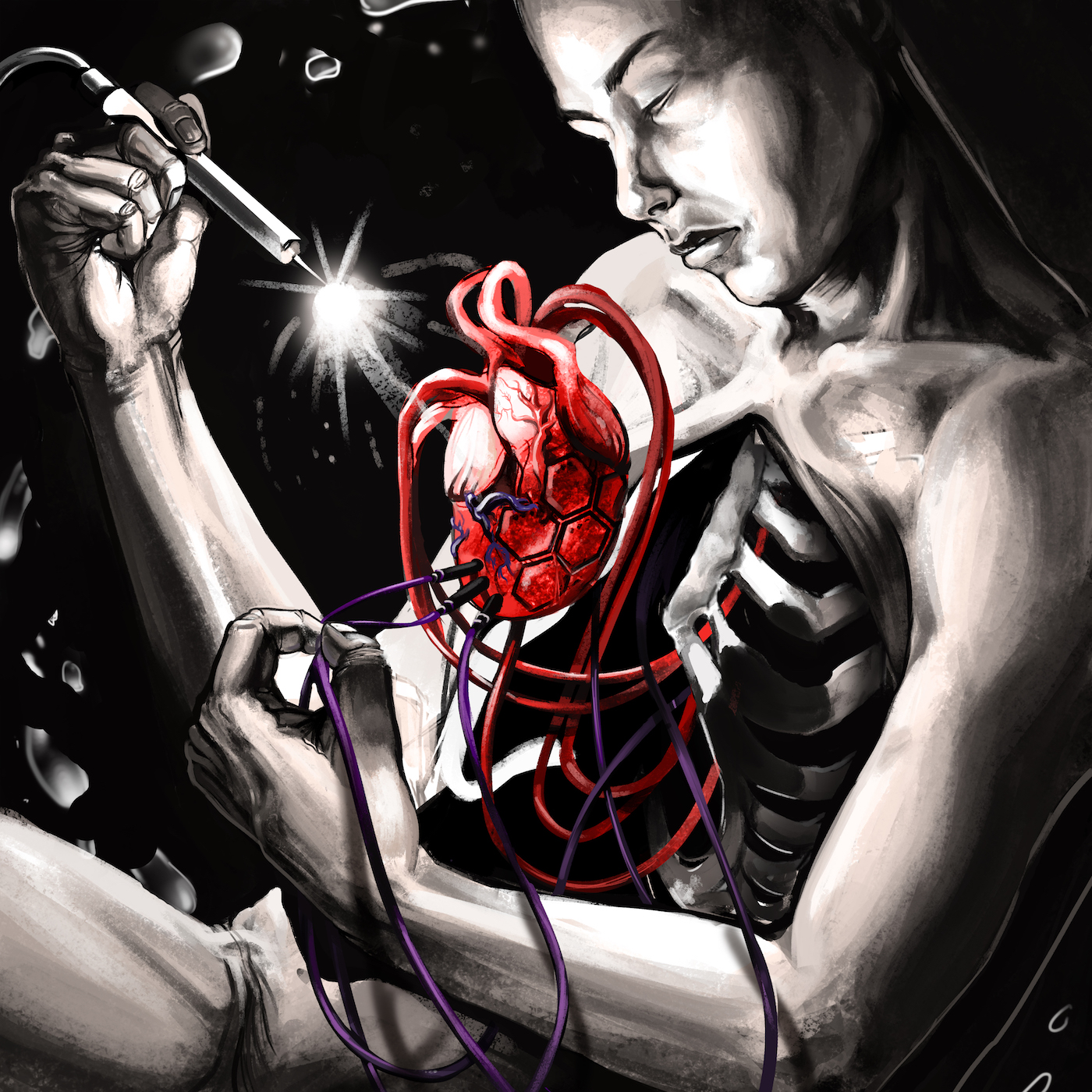
At its core, Meteora is an album about being angry at people that have hurt you (starting with “Don’t Stay” and clearly evident in “Faint”), but angrier at yourself for letting it happen (“Hit the Floor”, “Easier to Run”, “Figure.09”). The culmination of these emotions is the ninth track, “Breaking the Habit”, which Mike Shinoda wrote about a close family friend and which clearly alludes to stopping a painful, angry cycle of suicide. The album comes to a glorious finale in “Numb”, which ties up the overall theme by leaving the listener with the powerful chorus:
I’ve become so numb, I can’t feel you there
Become so tired, So much more aware
By becoming this, all I want to do
Is be more like me, and be less like you
Listening to these words, and the album in general, is a much more emotional experience after Chester Bennington’s tragic 2017 suicide. Every scream, wail and desperate plea becomes so much deeper and more real—we’re not just listening to a singer play a character, we’re listening to an artist crying for help. It’s raw, it’s beautiful, and it’s the reason why Meteora was not only the first album I ever purchased, but still one of my absolute favorites.
Contributors

Nate Rice is a writer and music lover based out of North Carolina that can either be found enjoying the outdoors or typing frantically away in the corner of a local coffee shop.

Rebecca Myers has always loved anything with a good story, which has inspired her to become an illustrator.
January 19, 2018
-
Guest Album Review – “Big Time” by Tom Waits
This guest review was originally part of a music blog project I created called Under The Deer. Since that site won’t be around forever, I’m archiving these wonderful reviews and their accompanying illustrations here. Writer and illustrator listed at end of the review.
There’s a particular pool of adjectives from which any Tom Waits review is bound to draw. In it are words like boozy, gravelly, gruff, strange, and carnivalesque. There’s no avoiding them, so I might as well come out and say it: Big Time—Waits’ 1988 album of hyper-energetic, belted-out live recordings—is as boozy, gravelly, gruff, strange, and carnivalesque as they come.
Big Time was released as both an album and a film; an unusual piece of musical theatre made mostly from live concert footage. Spliced in with it are brief scenes of Waits in character as Frank O’Brien—his alter-ego from Frank’s Wild Years, the one who torched his house along with his mundane suburban life and headed off on the Hollywood Freeway to follow his dreams (“Frank’s Wild Years” was first a song, then a short-lived musical play, then an album). The closest Frank ever gets to fame, Big Time suggests, is a job selling tickets and popcorn in a movie theatre. When he dozes off, he dreams of taking the stage. Waits’ real-life performances become, mind-bendingly, a figment of his own creation’s dreams.
None of this is particularly explicit, mind you. It’s more a strange mish-mash of footage used as a vehicle for delivering an album of live recordings. What’s clear is that, with Big Time, the narrative was built to fit the songs and not the other way around.
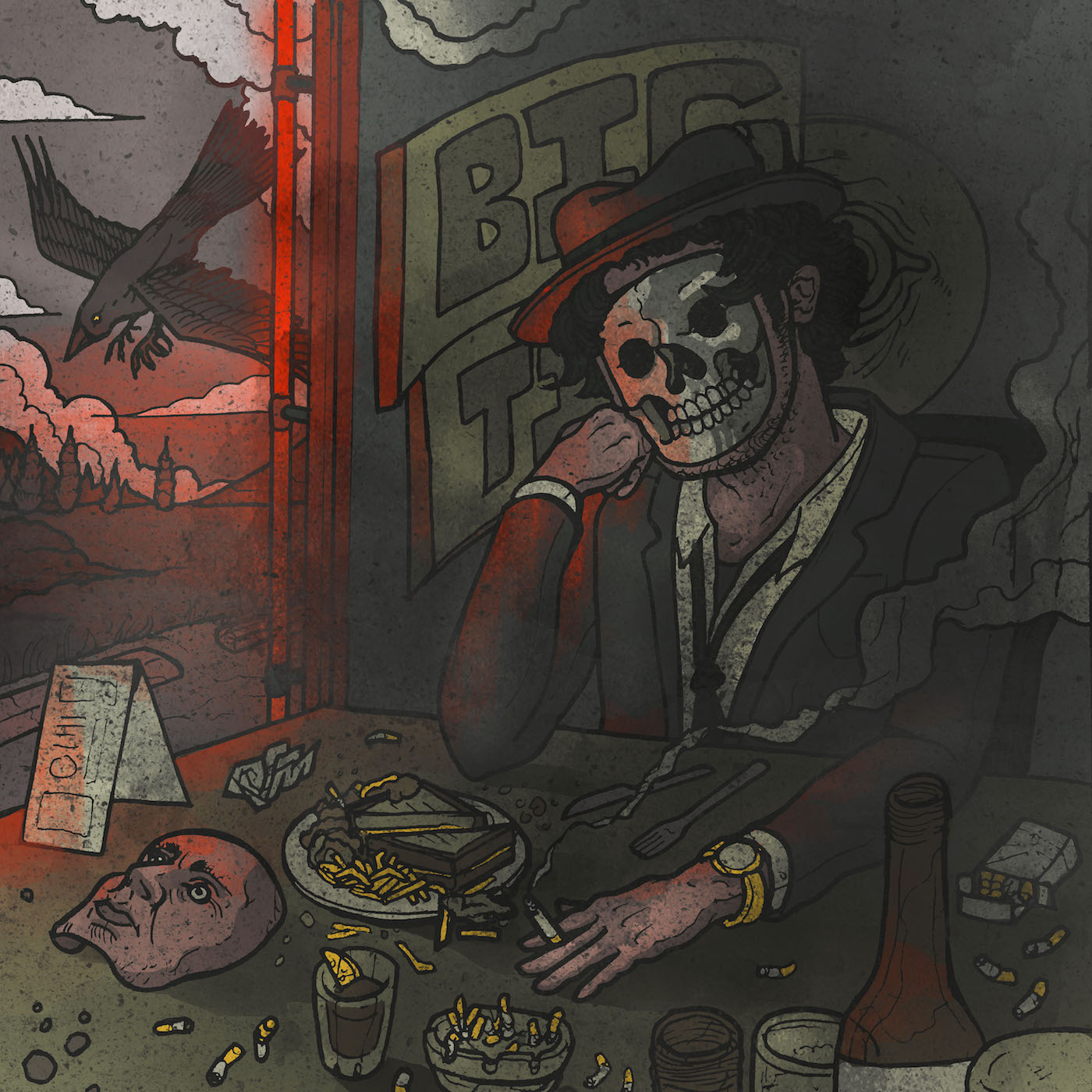
The album itself, divorced from the visuals of the film, is therefore best listened to without any narrative in mind. That’s when it becomes what it is: an 18-track distillation of Waits’ live energy. All the shrieking and pounding and grumbling and growling; all the preaching and purring and snarling and howling; immortalized, for those of us who couldn’t be there.
Most of the songs on Big Time are live versions of songs from the albums Swordfishtrombones, Rain Dogs, and Franks Wild Years. The thing about live versions is that they’re often inferior carbon copies of their studio originals: fun to listen to, but with nothing new to add. Big Time is not like that. It gives us the same songs, but in different flavors we haven’t tasted before.
Take “Red Shoes,” for example. The original had a bass line that slinked beneath the spoken word like a smoker under a streetlamp, all dark, rain-washed noir. On Big Time it’s reinvented as a hand-clapping, shoulder-shimmying track with a middle eastern influence and a fluttering Klezmer-style clarinet.
“Rain Dogs”—Waits’ anthem to the lost, the ones who have nothing, the ones who huddle in doorways but still find ways to dance and dream—becomes more urgent, the rhythmic twanging guitars engulfed by his barked-out vocals and heated growls. The live version hurtles towards its conclusion like a chaotic gypsy folk dance, twirling faster and faster each time the theme repeats. In the film version, Waits kicks his legs like a Cossack dancer, winklepickers slapping the confetti-covered floor while a fez-wearing accordionist (Willy Schwarz) goes into overdrive behind him. The whole thing is raucous, abrasive—and strangely delightful.
“Way Down In The Hole” takes the original song to a fever pitch. Waits, in character as a hellfire preacher on a mission, condemns the devil with a fire in his guts and a voice that’s drawn from every fiber of his being. “Just see if you can come up with a figure / That matches your faith,” he urges atop an ensemble of funky bass and syncopated horns that make you want to join his imaginary congregation.
Not all the songs on Big Time get you in the hips. Others are slow and heartfelt. There’s the stripped back piano and plaintive solo horn on “Ruby’s Arms”; the croaky-voiced sadness of “Train Song”; and the close-your-eyes-and-lose-yourself melancholy of “Time.”
My favorite from the album is “Cold, Cold Ground,” a song about the simple life and a riff on the familiar theme of death as the great leveler. “The piano is firewood / Times Square is the dream,” sings Waits over a major first to minor sixth chord progression that makes the harmony particularly bittersweet. Between the studio version and the Big Time version, the Mariachi-style accordion softens and melts into something more wistful. The bellows sigh, the music sways. Like the life-to-death theme, the song’s beauty is simple and devastating.
If you’re not a Tom Waits fan, your maiden voyage into Big Time might be an experience akin to having gravel poured in your ear. Waits has a voice that takes warming to; the instrumentation is unconventional, the tracks filled with clangs and sirens and whistles and clatters. Waits also happens to revel in imperfection. Bill Schimmel, a band member with the Franks Wild Years musical stage play, once recounted how Waits would urge the musicians to make deliberate mistakes, to prevent the songs from becoming too rehearsed or polished. “He’d want tricky little train wrecks in the textures,” Schimmel said.
Like the music, and like Waits’ sandpaper voice, Big Time as an album is imperfect. It’s cut together in nonsensical ways. It’s punctured by cliches and contrivances. The music is often rough and raw. The concept lacks cohesion, the narrative created for the film is fractured and forgettable. But, weirdly, Big Time’s flaws are what makes it so magical.
Why? Because imperfection invites curiosity. Because it’s the bumps in the texture that make it interesting to touch. Because to find yourself amidst a carnival of chaos—especially one of the boozy, gravelly, gruff and strange variety—is the most fun you’ll ever have.
Contributors

Tania Braukamper is an Australian-born writer. When she’s not working you can find her playing Chopin on her second-hand piano or brawling in a boxing ring. She believes in curiosity, kindness, and music as manna for the soul.

Jake Carruthers is an illustrator and designer from Toronto, Ontario. His bold style explores surreality through a clash of dark and light subject matter. His work can be found anywhere from album covers, logos, advertising, infographics and more to the merchandise of musical acts such as Good Charlotte, August Burns Red, and Monster Truck.
January 16, 2018
-
Guest Album Review – “Take Care” by Drake
This guest review was originally part of a music blog project I created called Under The Deer. Since that site won’t be around forever, I’m archiving these wonderful reviews and their accompanying illustrations here. Writer and illustrator listed at end of the review.
In his influential 2010 book Retromania, critic Simon Reynolds argues that the easy accessibility of recent pop music has had a stifling effect on creativity. Once upon a time, record labels regularly “deleted” old LPs, and few albums were reissued after their immediate release cycle. If you didn’t buy a record when it came out, it would take you no small effort if you wanted to hear it again ten years down the line, like a connoisseur of trashy video games trucking down to a landfill in Alamogordo with a spade. This had the effect of diluting influence: if you wanted your drums to sound like Can circa Tago Mago, you couldn’t just go to any old shop to buy the LP, let alone download it, let alone sample it. More often than not, you were forced to reproduce the sound in the studio as best you could recall it—and memory itself is inexact. The sound you ended up with might bear only the faintest resemblance to what you were going for, but through that flawed reproduction process, you might have stumbled onto something new.
In Reynolds’ conception, even the best music of the 2000s is pastiche and collage. Bearded indie rockers lovingly assemble records destined to be described as “Band X meets Band Y, with a hint of Band Z” by record store sommeliers, while EDM bangers recycle old material for a hit of nostalgia (sometimes cynically). I don’t entirely disagree with Reynolds’ conclusions, but it’s worth noting that the wheel has already turned from the era he was writing about. Mash-ups, the most literal example of “retromania,” have returned to the hinterlands of YouTube, while young artists seem less inclined to talk about their tapestry of influences than their social justice bona fides. The change is generational and has less to do I think with a difference in approach as it does with attitude. Being older, and a music historian to boot, when Reynolds’ hears a sample he can’t help but recall its original context; to him, most samples are by default referential. But for many new artists (and listeners), the past is simply raw material to be reduced in the service of a new vision. Reynolds could hardly have anticipated a rapper would emerge almost in tandem with his book who would embody this omnivorous and (productively) self-absorbed new status quo.

Drake’s first LP, Thank Me Later, dropped just a few months before Retromania was published, and its follow-up Take Care probably hit stores around the same time as the paperback edition. Somewhere in that 16-month window, the Canadian rapper-singer emerged fully-formed as the franchise that would go on to launch a thousand think pieces and stack up video game-level numbers on the Billboard charts. Post-808s Kanye in both production and content, Take Care establishes the basic OVO Sound, which would become as ubiquitous as Prince’s Minneapolis Sound in the ’80s: worlds of echo, muffled percussion, minimalist synths, like rain beating against the glass walls of a Toronto condo. But it’s the title track, a slight outlier on the record, that says the most about where we’re at in music today.
Decades before “Take Care” was soundtracking many a drunken, post-club reconciliation, there was “I’ll Take Care of You,” a song written by Brook Benton and first recorded by the great Bobby “Blue” Bland in 1959. Bland’s version is a smoky, hypnotic soul blues that glides along on little more than a pattering snare and a vamping Hammond organ. It was never a huge hit for Bland (#89 on the charts), but it would become a bit of a standard over the years. Crucially to our story, gravel-voiced jazz poet Gil Scott-Heron was enough of a fan to record it for his well-received 2010 comeback record I’m New Here. Now, this is where it starts to get more complicated. Scott-Heron shared a label with the xx, an English indie band whose producer Jamie “xx” Smith was subsequently hired to remix the whole record. Now titled “I’ll Take Care of U,” Jamie xx reimagined the track as a clubby yet melancholy fusion of Balearic house, dubstep, and the xx’s introspective guitar pop. Scott-Heron’s voice is scattered all over the track through echoes and spliced samples, while an icy, reverberant guitar lick serves as the song’s most instantly recognizable motif. Only then did Drake and his personal producer Noah “40” Shebib get their hands on it, adding Rihanna and cropping the title (and making just about everyone else in the tree above a bit richer).
That makes “Take Care” a (hold your breath) hip-hop interpolation of a post-dubstep remix of a postmodern blues cover of a fifty-year-old soul song. Despite this polyglot ancestry, it doesn’t play the kind of meta games with its form that Reynolds takes issue with. It feels self-contained, using these existing elements to tell its own story. In truth, 40 doesn’t make many changes to “I’ll Take Care of U” beyond simplifying the bass and drums to create a rhythmic platform for Drake’s rhymes. The more significant changes are matters of arrangement: Jamie xx’s track is house music, while Shebib’s revisions return it to a traditional pop song structure. And it’s within those familiar environs that Drake and Rihanna take over.
It helps that the two singers have such a public history, having been on-again, off-again lovers for years. While Rihanna’s biggest hits as of 2011 (“Umbrella,” “Only Girl (in the World),” “We Found Love,” the appalling “Love the Way You Lie”) seemed to reveal little about her, Drake’s palace was built on TMI. Perhaps the genuine intimacy we sense in their voices stems from their real-life closeness; or perhaps simply knowing that they are close influences our perception of the duet. However, it gets there, “Take Care” feels like an honest conversation between real people, even though the words Rihanna sings were written fifty years before Drake’s. The track wraps so snugly around their star personas it feels like it was written for them from the ground up. Drake’s performance is among his best, imbuing some of his most universal lyrics with empathy, protectiveness, and compassion.
“Take Care” occupied a unique middle ground in 2011-12’s Top 40, between the dominant pop house formula and Adele’s piano-driven torch songs, but with each passing year that middle ground has expanded. Drake himself has taken the formula to even greater chart success with tracks like “Hold On, We’re Going Home” and “One Dance,” but he’s also been joined on the pop charts by progressively weirder Lil Wayne/Drake progeny like Future, Migos and Young Thug, and genre-melting auteur statements from established artists like Beyoncé and Solange. Take Care, the album, looks more like a milestone of 2010s rap with each passing year. On the one hand, you have hints of an era just closed, like the forgotten Just Blaze banger “Lord Knows,” which sounded like a slight throwback even at the time, and the field recording of Scrooge McDuck counting his money in the studio that closes “We’ll Be Fine.” On the other, there are invaluable snapshots of future peers (Nicki Minaj, The Weeknd) and rivals (Kendrick Lamar) just prior to their own ascensions to superstar status. It even helped popularize fun ’10s tropes, like having André 3000 materialize on a deep cut and casually drop the tightest verse on the album, or relegating the hottest single to “bonus track” status (“The Motto”).
At well over 80 minutes of night-of partying, morning-after disappointment, it’s a bit of a slog even for fans, but it seems like a whole generation of listeners has come away from Take Care feeling as though their experiences at the turn of a millennium are validated by this music. Everyone’s drunk-dialed an ex who has moved on, or wanted to. Everyone has tasted some of the good life and found it more hollow than they might have imagined. Though the album snatches samples and interpolates a bevy of sources, it’s as personal a statement as any in pop music. And because we can believe this is “the real Drake,” millions have made it the soundtrack to a vital period in their own “real lives.” More than the catchphrases and memes, that will remain Drake and his collaborators’ most lasting contribution.
Contributors
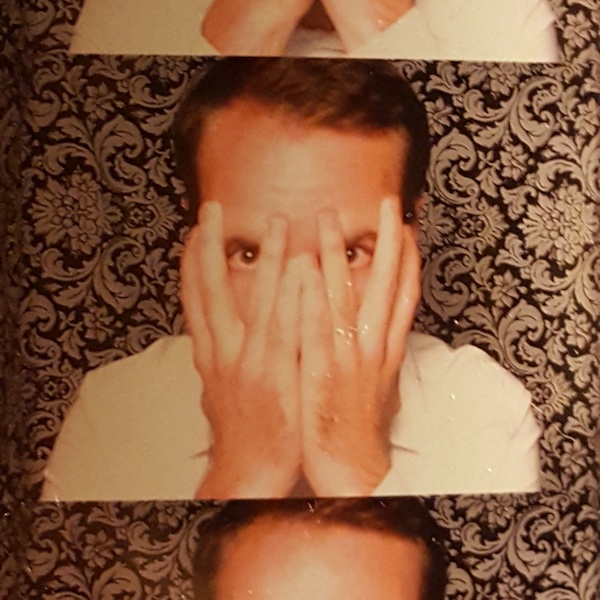
JM Francheteau is a writer based in Toronto, Canada. His writing has appeared in Arc Poetry Magazine, The Puritan, Broken Pencil, Bad Nudes and elsewhere.

Mia Batajić is a visual artist, illustrator, designer, human in progress from Belgrade, Serbia. Lover of expressive art, crooked lines and color.
January 10, 2018
-
Guest Album Review – “Never For Ever” by Kate Bush
This guest review was originally part of a music blog project I created called Under The Deer. Since that site won’t be around forever, I’m archiving these wonderful reviews and their accompanying illustrations here. Writer and illustrator listed at end of the review.
When remembering the music of Kate Bush, critics usually point to 1985’s Hounds of Love, or its 1988 follow up, The Sensual World as the singer’s high points. Both are undoubtedly excellent albums, but for my money 1980’s Never For Ever is still Bush’s most compelling listen. Why? Because it represents the moment a great artist realized her full potential.
To understand the revelatory impact of Never For Ever, some context is necessary. Circa 1980, Kate Bush was a musician frustrated. She’d exploded onto the scene with her debut album, The Kick Inside in February 1978; a dramatic and bombastic blend of pop, art-rock, and prog that established the singer as a star almost overnight. That album was a labor of love, taking two years to record. But, EMI – mistakenly seeing Bush as a flash-in-the-pan phenomenon – was insistent that she bring in her second disc in a matter of months.
Coming out at the tail end of 1978, Lionheart was, by Bush’s standards, a rush job. Only three of the record’s ten tracks were newly composed for the album. The rest were leftovers from her teenage years, songs written before her debut. An uneven record, it was summarily dragged across the coals by the critics. Chris Westwood of Record Mirror was perhaps the most scathing, describing a “bland and soulless” record “which is at best moderate, lacking and often severely irritating…” Even Bush herself was openly critical of the album in interviews: “Considering how quickly we made it it’s a bloody good album, but I’m not really happy with it”.
Lionheart was a product of record label interference that undermined the reputation Bush had built for herself. Realizing that another dud could torpedo her career, the singer became the master of her own destiny on its follow-up. For the first time, she produced the record herself, affording ultimate control over the project. Peter Gabriel, whose third album Bush had appeared on, was a clear influence, both in his individualistic approach, and his choice of instrumentation. The Fairlight CMI synthesizer – a favorite tool of Gabriel’s – was utilized extensively on Never For Ever, employed to create the luscious, immersive textures that characterize the album.
When it came out in 1980, Never For Ever, was the most expansive and conceptual work that Bush had released. It is suitably Floydian in parts, unsurprising given the early mentorship that Bush received from Pink Floyd guitarist Dave Gilmour. That influence seldom dilutes the impact of Kate’s distinctive voice. This is an album where Kate Bush, as songwriter, really shines through; It often feels like an aural storybook, creating a rich tapestry of tales drawn from the annals of history, art, and popular culture. From her imagining the final years of composer Frederick Delius’ life in Delius to retelling the 1961 Brit horror film The Innocents in Infant’s Kiss, Bush’s lyrics bring a new and deeply personal perspective to old tales.
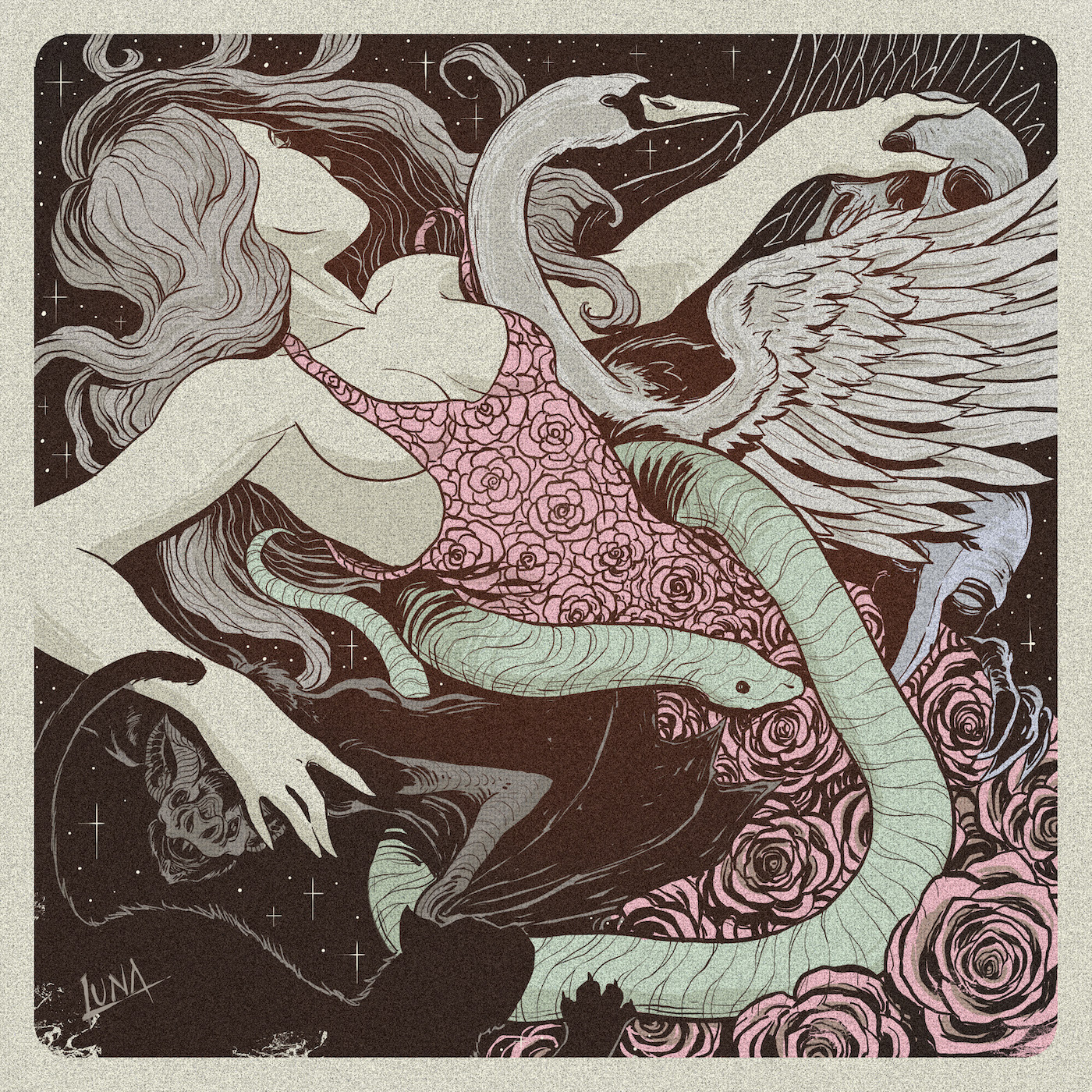
It’s an album of many strong moments. Babooshka, the record’s most well-known song, has lost none of its initial impact. Its compelling, understated, piano-driven verses contrast magnificently with the explosive, bombastic choruses, which affirm Bush’s status as one of the great voices of her generation. The Wedding List and the riotous, pseudo hard-rock of Violin are slyly witty and immaculately constructed. But it is the closing one-two punch of Army Dreamers and Breathing that is Never For Ever’s undoubted highlight. The former, a song about a mother wrestling with the guilt she feels over a soldier son’s death is sparsely arranged, with Bush’s understated vocal delivery proving particularly powerful.
Contrasting Army Dreamers’ sparsity, Breathing is a full-blown, five-minute rock opera; a tale of nuclear Armageddon uniquely told from the perspective of a fetus in utero. The song is the album’s most evocative moment, capturing the abject terror of an unborn child who, in the face of apocalyptic catastrophe can do nothing but “breathe the fall-out in. Out, in, out, in.” As the track reaches its very literal explosive crescendo (a terrifying, fictional news report announces the dropping of an atomic bomb), Bush offers her most impressive vocal moment of the record, an impassioned cry of “God give me something to breathe” that pierces over collaborator Roy Harper’s monotone and almost emotionless repetition of the phrase “what are we going to do? We are all going to die.”
The impact is lasting, resonating long after the song has finished.
37 years after its release, Never For Ever still shines as a catalytic moment for Kate Bush. It’s a fact reflected in the record’s phenomenal sales achievements; it was the first solo album by any female solo artist to enter the UK charts at number 1 and it stayed in the UK top 75 for a total of 23 weeks. But it’s not just the sales that make Never For Ever special. Powerful and compelling, displaying incredible maturity from the-then 23-year-old, it set Bush up for a string of classics – The Dreaming, Hounds of Love, The Sensual World – that are amongst the greatest albums of the 1980s. It’s because of the acclaim of those successive records that Never For Ever is often overlooked. It shouldn’t be though; it’s a forgotten classic, fully deserving of re-evaluation.
Contributors

Alec Plowman (Norwich UK) is a popular music obsessive. A journalist by day, he recently completed a Ph.D. on the history of live recordings (technically he’s a doctor of rock). When not writing about music, he plays it, fronting hard rockers Monster City.

Franco Luna is an illustrator, graphic designer and comic book enthusiast based in Mendoza, Argentina.
January 8, 2018
-
Guest Album Review – “The Bends” by Radiohead
This guest review was originally part of a music blog project I created called Under The Deer. Since that site won’t be around forever, I’m archiving these wonderful reviews and their accompanying illustrations here. Writer and illustrator listed at end of the review.
It’s hard to believe, but it’s been 20 years since Radiohead became one of the most popular rock bands in music history with their third album OK Computer. Since then, they have released another three albums that could be considered classics: Kid A, In Rainbows, and their latest release, Moon Shaped Pool. OK Computer marked the band’s progress into more experimental forms of songwriting, leading to two decades of defining trends rather than chasing them. Yet in my obsessive opinion, OK Computer isn’t Radiohead’s most important album. Their sophomore album, The Bends is.
Being Radiohead’s most traditional rock and roll release, and with Radiohead so influential on the music scene at the time, it’s an album that came to define what British rock was from 1995 to about 2006. But The Bends frequently gets lost in the mix. OK Computer and Kid A may have been game-changers in terms of what a mainstream rock band could get away with, and In Rainbows is certainly the most pleasing listen for most fans, but The Bends was a game-changer for the band, and for me.

In a way, my changing taste in music mirrored Radiohead’s change in sound. After the success of their debut album Pablo Honey, and especially their mega-single Creep, Radiohead risked painting themselves into a corner as “the British Nirvana.” While Pablo Honey isn’t a bad album – Creep, Stop Whispering, You, and Blowout remain great songs – but it sounded like a band who were battering against a sound they were never entirely comfortable with. This led to the band adopting a comparatively lighter but more intricate guitar-driven sound, coupled with Thom Yorke’s increasingly cryptic lyrics. In the same way, it was bands with a simpler rock sound, like Nirvana and, alas, Coldplay (I was young and foolish) that led me to give Radiohead a try as they promised a deeper, more rewarding listening experience. Like many, I started with OK Computer, and I still love that album to this day, but it took The Bends to show me how utterly stunning traditional rock music can be.
The opening bars of Planet Telex felt like the musical equivalent of the stargate scene in 2001: A Space Odyssey, a huge wall of sound cracked open by Phil Selway’s drums and the three-guitar attack of Jonny Greenwood, Ed O’Brien, and Thom Yorke. Like Joy Division would confirm to me later in my teens, songs with lyrics like Everything is Broken (screamed almost triumphantly) could be endlessly cathartic. It’s the band’s best opening song to date. Then the title track, which Yorke himself has said many times is just nonsense that was a lot of fun to write and play. It’s also in The Bends that Yorke first mentions a need for connection: “I want to live, breathe, I want to be a part of the human race,” a theme that would recur throughout the album.
High and Dry was the first song I heard from The Bends, and its acoustic guitar and Yorke’s cherub-like vocal made it the easiest song to connect to at first. While it was one of the singles, Yorke has stated that he hates it and that it’s the worst song about nothing he has ever written. Not to me – it still gives me chills and remains one of the band’s more popular singles to date. As does Fake Plastic Trees which is rightly regarded as one of Radiohead’s best songs. Bones left me cold for a long time, nearly a decade in fact. It took me getting a little older to understand the fear and yearning within the music. It’s one of the album’s heavier tracks, but it deals, in an almost fairy-tale fashion, with getting older. Yorke’s declaration that “I used to fly like Peter Pan” harks back to a time of childish imagination, something we all must let go of at some point.
In spite of Yorke’s more impressionistic lyrics, there are themes that recur. The aforementioned need for connection and the breakdown of relationships can be heard in (Nice Dream), The Bends, the imploding relationship in the majestic Black Star, and Street Spirit (Fade Out).
Street Spirit is an almost elusive album closer. Nothing else on the album, or indeed anywhere else in Radiohead’s discography, sounds anything like it. Yet it is intrinsic to the album beyond its status as curtain closer. If we remember Planet Telex statement that everything is broken, Street Spirit tries to move beyond that cynicism. With Yorke’s relation to death, as action and as symbol, he takes the role of himself finding power and love in life just before it ends. The last line of the album is “Immerse your soul in love,” an achingly beautiful and positive note to end an album that is often a downer. If we take The Bends as a full piece, it is a story of reconnecting with life, growing older, and embracing love, despite what its less optimistic songs might imply. I certainly didn’t see that coming on the first listen through.
As affirming as this is to me, this isn’t the only reason the album is so iconic. It has also come to define the opposite of the sophomore slump. In the mid-90s to late 00s, British bands and their progression, or lack thereof, between their debut album and their second was judged by criteria that The Bends helped create. If Oasis defined the second album being the first album but with strings, then Radiohead represented a band who made a seemingly impossible jump in quality from album number one to number two. Bands such as Coldplay, Muse, even Kasabian, and Razorlight, managed to “do a Radiohead” by releasing second albums that were vastly superior to their first. If Radiohead is now known as the band who make the trends, then The Bends was the beginning of their zeitgeist-defining status.
Contributors

A gloomy two shoes from way back, Kevin Michael Boyle will tell you that Jesus and Mary Chain are the best band to ever come out of Scotland and ignores the existence of The Proclaimers completely for obvious reasons. He has been a music critic for four years mainly due to the fact that he can barely play the triangle.
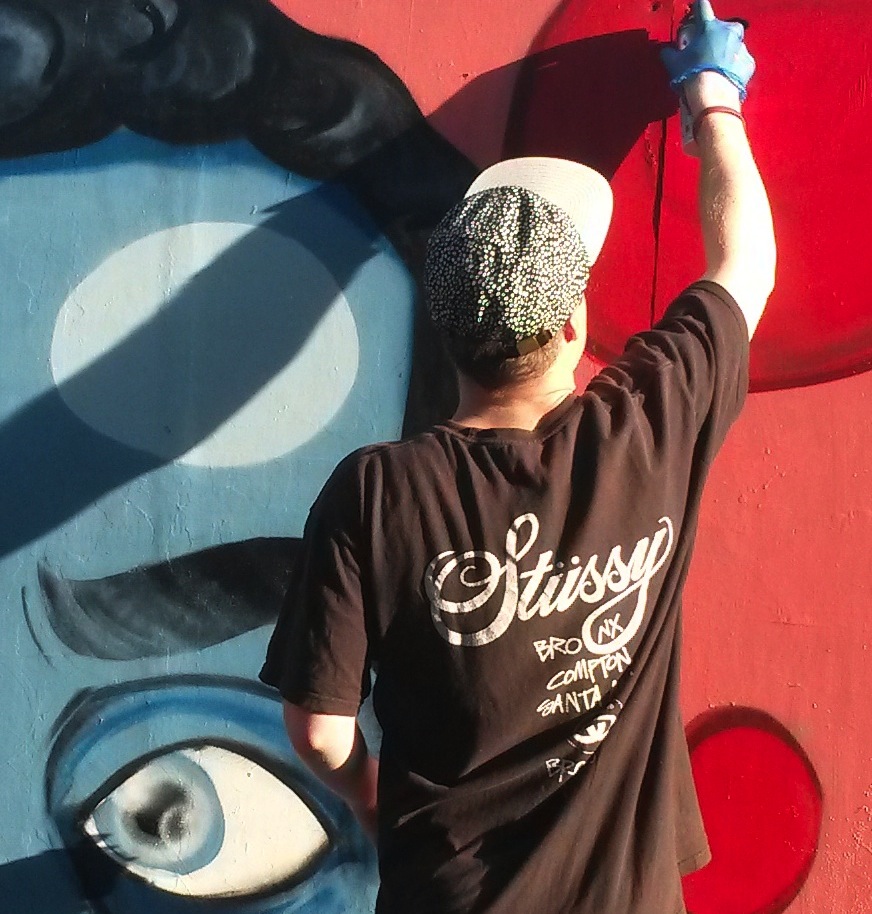
Kid Crayon is an urban contemporary painter/illustrator based in Bristol, UK. He has a love for drips and splats, with a style that is heavily influenced by hip-hop and skateboard culture.
January 5, 2018
-
Guest Album Review – “Last Date” by Eric Dolphy
This guest review was originally part of a music blog project I created called Under The Deer. Since that site won’t be around forever, I’m archiving these wonderful reviews and their accompanying illustrations here. Writer and illustrator listed at end of the review.
Out of a swell of applause emerges an acrobatic bass clarinet improvisation unlike any ever recorded. The flourish resolves into the iconic vamp of Thelonious Monk and Kenny Clarke’s jazz classic Epistrophy, launching a rendition of the tune that runs over eleven minutes. Yet it takes only those first 10 seconds to realize that you are hearing one of the preeminent reed instrument players of the 20th century.
So begins Eric Dolphy’s Last Date, an album rich with avant-garde musical invention and unrivaled virtuosity, yet shrouded in tragedy. The performance on June 2, 1964, was not Dolphy’s last concert, nor even his last to be recorded, but the title is appropriate since the album was his first recording to be released posthumously. Just twenty-seven days after this live set, the 36-year-old composer and musician died in a Berlin hospital of diabetic shock.
Dolphy’s instrumental prowess is the stuff of legend. His fluid phrasing and stunning leaps across multiple octaves on the bass clarinet, an instrument requiring massive breath support, are studied to this day by orchestral reed players at European conservatories. On flute, he could shift from the warmest, lushest classical tone to haunting, hollow, primal cries in an instant. Indeed, his dynamic feats on these two instruments make his much-admired wizardry on alto sax—the instrument for which he is best known—seem almost pedestrian.
It would be hard to imagine a better choice than Epistrophy as the album’s opener. Written in 1941, the piece was one of the first of Thelonious Monk’s many landmark compositions that propelled jazz into the modern era. Yet its driving, syncopated melodic motif perfectly embodies jazz’s street music roots. Exploiting the full range of his bass clarinet, Dolphy takes this “split personality” to the extreme. Throughout his solo, he juxtaposes relentlessly frantic, atonal phrases with tribal trills and bluesy bent notes that harken back all the way to 1920s New Orleans. Special kudos to bassist Jacques Schols for his funky, laid back, soulful solo on this track.
Although he opens and closes the piece on alto sax, Dolphy returns to bass clarinet for his solo on pianist Misha Mendelberg’s crazily named contribution to the album, Hypochristmutreefuzz. The piece is a perfect platform for Dolphy’s far-reaching melodic and harmonic experimentations.
Dolphy’s distinctive alto sound, with its blend of hints of Charlie Parker and avant-garde overtones, comes to the forefront throughout his compositions, The Madrig Speaks, The Panther Walks and Miss Ann. The first of these is an extraordinary piece of jazz writing, with a beautiful suspension of rhythm that appears cyclically throughout the piece. The main theme begins with a harmonically challenging, interval-based run landing on a dissonant trill, but the resolution of the phrase reveals Dolphy’s talent for subtle lyricism, even as he refuses to stop pushing the tension. As far as I know, no one is sure what a “madrig” is, but there are indications that the word had currency in the Black Nationalist movements of the 1960s, an intriguing possibility given both the title’s reference to a panther and the tune’s undercurrent of defiance.

In the end, it is Dolphy’s work on flute that always has been and remains my favorite element of this remarkable album. South Street Exit is an incredibly inventive take on the traditional 12-bar blues form, with a melody that beautifully embodies Dolphy’s love of unconventional arpeggios. In his solo, Dolphy alternates between aggression, introspection, and lighthearted whimsy. Arguably, however, it is Mendelberg’s bouncing, rhythmic piano solo that claims highest honors on this track. I have in fact recorded a (woefully inadequate, in my estimation) version of this piece, one of only three covers to appear among my four jazz CDs.
Even if you have never made peace with the dissonances and rhythmic irregularities of modern music, you owe it to yourself to at least listen to the first two and a half minutes of the fifth track on Last Date, Dolphy’s astonishing flute rendition of the beloved standard, You Don’t Know What Love Is. His 23-second, classically constructed solo introduction is a musical flying carpet ride to another plane of existence. Building on that classically ethereal foundation, he performs his ornate but tasteful rendering of the melody accompanied only by bowed bass drones. Yet amidst all the formality and grace, Dolphy sprinkles in some of the most chillingly perfect, blues-infused pitch bends ever produced on flute.
The overall effect is at once spellbinding and heartbreaking, a powerful reminder that not one of us truly does know what love is. Yet the mystery of the search infuses every breath of a lifetime with meaning, wonder, and the most beautiful sadness.
And sadness, a vast and powerful sadness, is indeed the inevitable and appropriate emotion experienced by anyone who listens to Last Date, especially if they also watch the companion video documentary of the same title. On June 28, 1964, Eric Dolphy fell into a coma during a tour stop in Berlin. Attending physicians claimed that they had performed blood tests and identified Dolphy’s (previously undiagnosed) diabetes, but that he suffered a fatal insulin reaction when they attempted to treat his condition.
Fellow musicians and many others close to Dolphy tell a very different story. They insist that hospital staff, blinded by stereotypes, assumed that the African American jazz musician was suffering from a drug overdose and errantly assigned him to the detox ward. They either failed altogether to perform the simple blood test that could have saved him or conducted it only when they realized their error, far too late.
Which story is true, or whether the truth lies somewhere in between, we cannot know. Hospitals did not keep detailed records in the 1960s. What we do know is that Eric Dolphy most certainly was not a drug addict. He lived his whole life sober and was one of the most disciplined, hardest working musicians in all of 20th-century music. Almost certainly, his death could have been prevented with prompt diagnosis and careful treatment.
The volume of groundbreaking music that Eric Dolphy produced in the four years before his untimely death is almost beyond comprehension. What he could have accomplished with another 30, 40, 50 years or more is truly beyond imagination.
In the final seconds of Last Date, we hear Dolphy’s own words from a moment when he addressed the audience. “When you hear music,” he said, “after it’s over, it’s gone—in the air. You can never capture it again.” I wholeheartedly agree that no musical moment can ever truly be reproduced, even with the best recording technology existing today or yet to come. The performance does indeed melt into the air. But I do not accept that it is gone. A wave once formed reverberates across vast times and distances, and the musical waves Eric Dolphy created over 50 years ago still set our souls vibrating today.
Contributors

Bennett (Ben) Siems is a writer, editor, guitarist, cellist and composer who lives in Minneapolis, Minnesota USA. His writings on music have been published worldwide, and his own music has been the subject of numerous feature articles on the web and in music magazines.

Ser Sinestésico
is a surreal & psychedelic Collagist born in Buenos Aires and currently based in Berlín
.
January 3, 2018
-
Guest Album Review – “Fourth World Music Vol. 1: Possible Musics” by Jon Hassell & Brian Eno
This guest review was originally part of a music blog project I created called Under The Deer. Since that site won’t be around forever, I’m archiving these wonderful reviews and their accompanying illustrations here. Writer and illustrator listed at end of the review.
“Fourth World Music Vol. 1: Possible Musics” is a work of exotic beauty, merging influences from traditional music, jazz, and analog electronic composition into a hypnotic new form.
Hassell came up with the term Fourth World to signify the merging of third world traditions with first world technologies. A composer and trumpet player with an academic and classical background, he had trained with the European avant-garde composer Stockhausen and associated with the American minimalist innovators, Terry Riley and La Monte Young. He also studied with the same classical Indian vocalist that had influenced Young, Pran Nath, incorporating his curving Raga based tonal progressions into his trumpet style.
At the time when he made “Possible Musics” Hassell was thoroughly invested into his “North meets South” philosophy of music, in his terms merging the “above the belt” intellectual style of modern western composition to “below the belt” sensual rhythms. The use of the wah-wah pedal on the trumpet, inspired by Miles Davis, was just one of the methods he used to achieve this crisscrossing of his metaphorical equator – the waistline.
Hassell’s trumpet in Possible Musics is laden with chorus and harmonization effects, taking on the qualities of humans, spirits, and animals. The album begins with Chemistry, an invocation of these new combinations of sound and place. His breathy vocal trumpet sings out over Percy Jones twanging bass line. The sparse but grounding water-drop like percussion of the Ghatam (an Indian clay water jug drum), played by the Senegalese percussionist Ayibe Dieng and Brazilian Nana Vasconcelos, creates an ambiance of impending ritual from an unnamable location.
The ensuing low congas of Delta Rain Dream, evoke a gathering of rain dancers harnessing the clouds, while the deep-voiced-trumpet spirit calls from a distant valley. The delta in the title here could be about the Mississippi (Hassell hails from Memphis, Tennessee) or perhaps the Nile. Either way, this track leads brilliantly from the heavy swaying fecundity of lowlands into the close-quartered personal séance of Griot (Over Contagious Magic). Here a phaser on the trumpet transforms it into whinnying animal, bearing the listener into the spirit world. A small group claps hands, while small high-pitched electronic creatures of the evening alight on the wood of a creaking analog windowsill. Next, Ba-Benzele glitters with melodic interlocking synthesizer rhythms harmonized with interjections by the trumpet’s childlike calls. The track makes a direct reference to the music played by equatorial Pygmies on the Hindewhu whistle to harmonize with the forest.

Finally side one of the LP ends with Rising Thermal 14° 16′ N; 32° 28′ E, coordinates that indicate somewhere south of Khartoum on the White Nile, exactly what the cover of the LP depicts. The image, a Landsat photo from the NASA archive, is like the album: supersaturated and otherworldly. Here the trumpet sounds like its played by a howling wolf on a see-saw. In the background, the electronic insects are replaced by a field recording of crickets and birds in Altamira, Spain, the location of delicate 35,600-year-old petroglyphs.
Charm (Over “Burundi Cloud”) is the entire second side of the LP, where the elements introduced on side one play out as a longer-form conversation. Brian Eno’s modulating Minimoog becomes a slow-moving river where the trumpet, congas, ghatam, and drum samples float and dream, like reflections from the clouds. It’s an album that can gently accompany your world, or if you choose to invest your attention, invites you to explore a richly harmonic alternate universe.
“Possible Worlds”, released in 1980, represents a pivotal moment in music, with a coalescence of influences that was unique for the time. Hassell’s 1978 release “Vernal Equinox,” a rhythmic palimpsest of shifting trumpet dronescapes, had caught the attention of Brian Eno, who was in New York to produce the Talking Heads’ “Remain in Light.” Eno sought out Hassell at a performance at one of the city’s underground venues “The Kitchen,” igniting a friendship between Eno, Hassell, and David Byrne. Thus, it is no coincidence that the process and philosophy that went into this masterpiece, directly inspired the more well-known and pop-influenced Eno/Byrne collaboration, Life in the Bush of Ghosts of Ghosts, produced only ten days later.
Hassell also continued to produce his niche of experimental, ambient sound worlds driven by traditional rhythmics, but Fourth World Music Vol. 1: Possible Musics, is the matchless initiation that gently yet insistently prods awake the mind’s ear, by both design and circumstance.
Contributors

Alyssa Moxley is a writer and experimental composer. She mostly works with sound and field recordings to transform environments via live performances, compositions and installations.

Carol Cavaleiro is multidisciplinary designer from Brazil
.
January 1, 2018
-
Guest Album Review – “Kind of Blue” by Miles Davis
This guest review was originally part of a music blog project I created called Under The Deer. Since that site won’t be around forever, I’m archiving these wonderful reviews and their accompanying illustrations here. Writer and illustrator listed at end of the review.
The bass begins the conversation by providing a statement which is answered by two piano chords. It almost sounds like both instruments are warming up as they acknowledge each other.
The bass then anchors a pedal tone creating the backdrop as the piano chords linger in the air like cigarette smoke accented by poor lighting. The atmosphere is dark and moody while the instruments seem to be randomly offering improvised phrases.
There’s a three-bar phrase that’s played together. An intimate conversation that only these two instruments seem to understand. The piano gains momentum playing simple triads, but, the chromatic movement offers an air of tension.
The bass rumbles some off-handed comment before inviting the drummer to join them.
Eight measures later, the horns enter, and the stage is set. We’ve all been invited into the conversation.
Twenty four measures later, the cymbal crash announces Miles’s solo.
It was the early ‘80s, and I was listening to 88.3 FM (aka “Jazz 88”) on a transistor radio not-so-secretly hidden under a pillow in my darkened bedroom. I was 12 years old and worked for the local butcher in Queens, NY. I swept the floors, cleaned chicken grease and chopping blocks, knives, and countertops. The money I made was quickly invested in my music education at the local record store where I’d purchased Led Zeppelin, Pink Floyd, Van Halen and other music of the day. Kind of Blue was my first jazz album and soon became the soundtrack for my high school and college years.
Jazz music was filled with complexity. It took work to listen to and to try to play it was even more challenging. It required commitment from both artist and fan. The perfect combination of elements for a young music nerd. Many of my friends did not know of my new musical discovery. It was confined to conversations with my guitar teacher, other music geeks that hung out at the music store, and my neighbor, an older gentlemen and jazz drummer named Bobby.
There are many sub-genres of jazz and some of them I struggled with early on. I enjoyed the swing era and the big band sounds, then I heard bebop and loved the energy but had trouble understanding it—I didn’t know what to listen for and would easily get lost. I wanted to like jazz, but it wasn’t until Kind of Blue came along that the door to my lifelong love and obsession for jazz was opened.
Kind of Blue is one of the most famous and successful jazz albums ever made and was recorded in two separate sessions during the spring of 1959 and released in August of that same year.
The album’s all-star lineup featured Miles Davis on Trumpet and Session Leader, John Coltrane on tenor saxophone, Julian “Cannonball” Adderley on alto saxophone, pianist Bill Evans (with Wynton Kelly replacing him on “Freddie the Freeloader”), Paul Chambers on double bass, and Jimmy Cobb on drums. All of these fine musicians had long careers, and all would go on to lead their own bands. Except for Paul Chambers who passed away in 1969 at the age of 33.
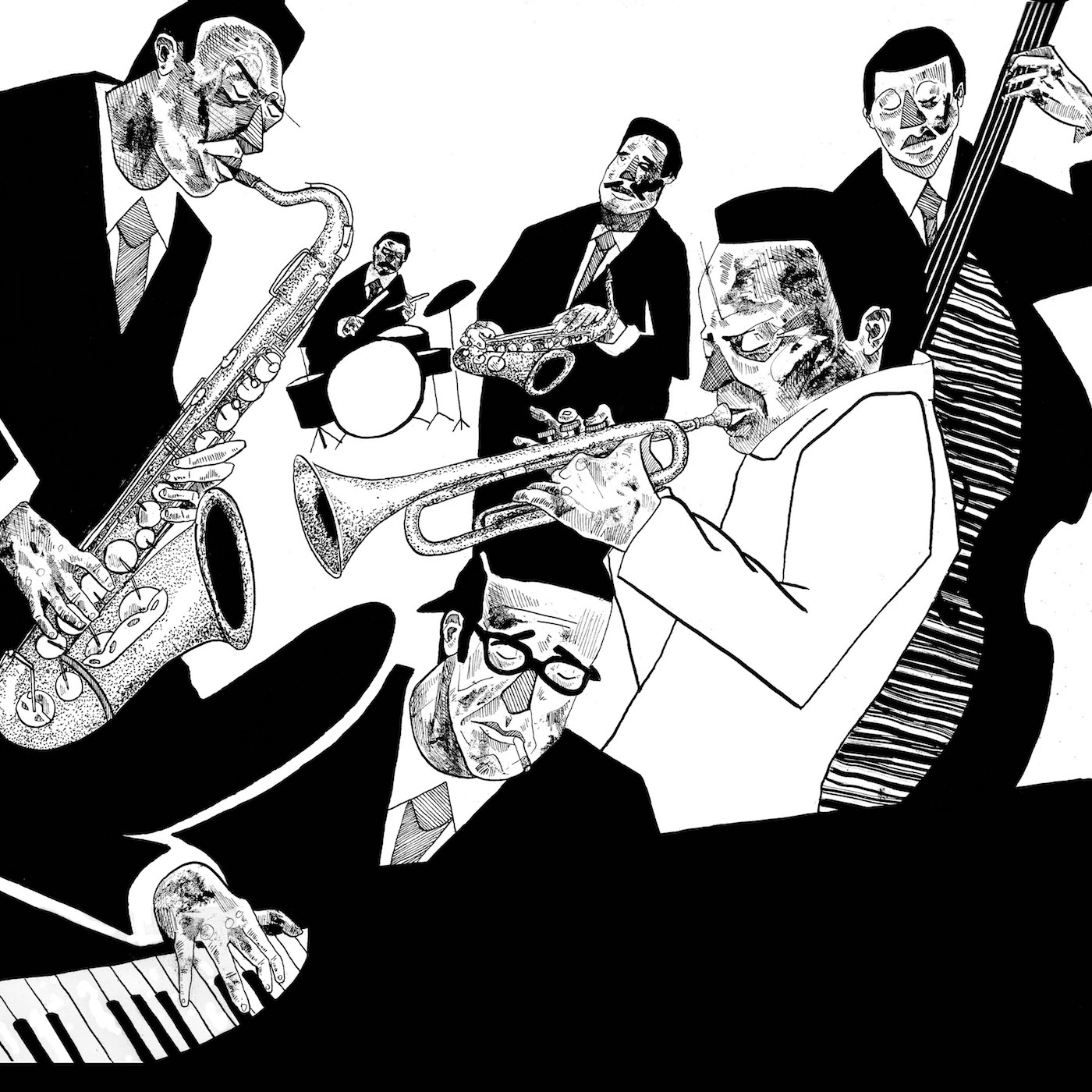 The album’s composers, George Russell, Gil Evans, Bill Evans and Miles Davis all knew each other and were all interested in exploring modal jazz. In modal jazz, the harmony and chord structures move in a non-traditional manner. Rather than basing their improvisations on chords and arpeggios, the players approach their solos in terms of these groupings of notes. The foundation is pared down to the bare minimum, offering the improvisers greater freedom.
The album’s composers, George Russell, Gil Evans, Bill Evans and Miles Davis all knew each other and were all interested in exploring modal jazz. In modal jazz, the harmony and chord structures move in a non-traditional manner. Rather than basing their improvisations on chords and arpeggios, the players approach their solos in terms of these groupings of notes. The foundation is pared down to the bare minimum, offering the improvisers greater freedom.The 1959 recording sessions for the album were a conceptual experiment. That is one of the reasons why there aren’t many alternate takes. In fact, only Flamenco Sketches has two full versions. Miles had a lot of influence with Columbia Records at the time, and the company provided him with the liberty to explore this new direction.
These sessions were recorded in the late fifties and therefore we’re listening to 1950’s recording technology. The modern technique of “close miking” (placing the microphone right in front of the instrument and recording that instrument to one track) was not being used. All of the musicians played at the same time in the studio with the drums having some baffles to control the sound, but that was essentially it.
The recordings in those days were done with two machines: the master machine and the safety machine. The safety was just that, a backup in case the master went down. On these sessions, the master machine accidentally ran slow and, therefore, to play along with these recordings, musicians have had to tune down to accommodate the slower playback speed. This wasn’t discovered until the early ‘90s when the master and safety were compared. It has since been addressed in the remastered version of this recording. The first two tracks were recorded during the first session (2 March 1959), and the remaining three tracks were recorded during the second session (6 April 1959).
There were no splicing or studio recording tricks. Each track was a complete “take” or performance by the musicians the whole way through. There are alternate takes (or versions), but most of them are not complete—they are simply false starts. What we listen to are the live, one-time-performances of these songs.
During the recording session, none of the compositions had titles, they simply had track numbers or some other defining attribute like: “Fun Song,” “Mysterious Song,” or “Spanish Song.” The official song titles were added after, and a couple of the pieces only existed as basic ideas.
Often, the misconception with the album’s title, Kind of Blue, is that this is a blues recording or an exploration of the blues style. However, “blue” doesn’t mean blues in this case, but moody. All of the tempos are slow while the textures created are transparent and ethereal.
So What (2 March 1959): The opening track, So What, sets the tone. The loose interplay between Bill Evans and Paul Chambers announce that this is not your traditional jazz recording. Rather, it sets an ethereal atmosphere where everything is allowed to develop. The melody is in the bass, letting the listener know that what they’re listening to is something different. So What is the perfect example of a modal composition: The “A” Section is based on a particular group of notes, while the “B” section uses the same formula of notes a half-step higher.
Also, the three horns play impressive solos that are quite different: Miles breaks his solo down to the essentials, Cannonball uses chromaticism, almost as though he’s searching for chord changes, Coltrane demonstrates his sheets-of-sound approach as well as his comfort with the modal style. And on piano, Bill Evans mirrors Miles with a very stoic approach to improvising.
Freddie the Freeloader (2 March 1959): This track features Wynton Kelly in the piano chair and is a traditional 12-bar blues with an unexpected twist at the end of the first 12-bar section, followed by a more traditional 12-bar section. Freddie the Freeloader is relaxed and has a very simple two-note motif as the melody. Here, we can hear the different playing style and swing approach provided by Kelly’s piano accompaniment. This is arguably the most conventional track on this album.
Flamenco Sketches (6 April 1959): This is the only track that has two full takes. It’s one of the most interesting songs—in terms of modal construction—on this session as the tune is based on different tonal centers or five different groupings of notes.
The introduction song was written by Bill Evans and was featured on his 1958 recording, Peace Piece from Everybody Digs Bill Evans. In fact, the theme from Peace Piece is the basis for Flamenco Sketches. The structure of this composition makes it possible for the soloist to dictate when to transition from one tonal center to the next—unlike traditional song forms, where each section is 8, 12 or 16 bars. This makes it quite challenging for the bass player and pianist to transition from one tonal center to the next as there is no predetermined structure for the solo section. The tune organically evolves as each soloist takes center stage.
Blue in Green (6 April 1959): The shortest, most harmonically complex and unusual in terms of song structure. This tune is only ten measures long but has some quite unexpected chord changes that spiral throughout. The introduction to this piece brings to mind a collaboration between Bill Evans and Chet Baker on the song, Alone Together, which was recorded in 1958, about six months before the Kind of Blue sessions.
Miles does a masterful job of drawing out the melody with his use of subtle vibrato coupled with ornamental slides and his trademark Harmon mute. The use of the mute changes the timbre, feel and texture of the music.
This composition is not a modal piece, per se, due to the harmonic structure; however, the 10-measure form creates an ethereal landscape for the soloists. Adderley does not solo on this song, but, Miles and Trane offer powerful improvisations as well as Bill Evans (who solos twice).
All Blues (6 April 1959): The final track, is a waltz, not a blues, as it falls more easily into the category of modal music. Traditional blues transitions to the IV chord (or from G7 to C7) and, here, they move from G7 to Gm7 (or G Dorian) which is a different kind of sound. It can be counted in the traditional “1, 2, 3” waltz style or in the 6/8 time signature. Also, the dissonant chords before the turnaround add to the charm.
The song is set up by the horns playing a seductive phrase with Bill Evans applying an underlying tremolo, while Jimmy Cobb’s brushwork propels the song towards Miles’ entrance and his haunting approach to the melody. Miles plays the melody twice, then, during the 4-bar segue, he removes the Harmon mute and begins his solo which is signature Miles. That is to say; he is not playing blues, bop, cool, modal, etc.—he’s just playing Miles.
Cannonball approaches his improvisation in a traditional blues/bebop manner, and it almost feels as though he’s searching for the IV chord—and, please don’t misunderstand me, Cannonball plays a great solo, this is merely an observation. Finally, Coltrane outshines the other improvisers with his modal comfortability, technical prowess, and his use of odd-note groupings.
Kind of Blue changed the face of jazz and set the stage for moving away from traditional harmonic and song form approaches to the sounds that were further explored in the 1960s. Three of the five tunes have become jazz standards. In addition, Kind of Blue also provided improvisers with other possibilities for soloing.
The group was filled with innovative musicians who were constantly moving forward and, shortly after this recording, moved in their own directions. Later in 1959, Cannonball Adderley formed a group with his brother Nat. Coltrane left next and was probably the player that transitioned most easily into the modal style of playing as became apparent with his work in the 1960s. And, Bill Evans formed his own trio with Scott LaFaro and Paul Motian where he continued to develop this modal approach.
Miles continued to innovate styles and influence musicians. He formed his “Second Great Quintet” in the mid-60s which included Wayne Shorter, Herbie Hancock, Ron Carter and Tony Williams. This was later followed by his Bitches Brew sessions that are said to have launched the jazz fusion style. This fusion group consisted of many musicians including Chick Corea, Joe Zawinul, John McLaughlin, Dave Holland, and Jack DeJohnette.
Miles took a hiatus in the ’70s and reemerged in the ’80s, still exploring new ideas and different sounds. He passed away in Santa Monica, California due to a cerebral hemorrhage followed by a coma.
Kind of Blue strongly influenced musicians in many different genres from the funk and R&B players of the 60s to players as diverse as James Brown, Jimi Hendrix, Donald Fagen, Pee Wee Ellis, Maurice White, and The Doors. And it will continue to inspire generations of musicians to come.
Contributors

Ed Lozano is a professional guitarist, instructor, producer and published author. He is a graduate of Berklee College of Music and lives in the Andes mountains. He’s worked with Bob Dylan, Paul Simon, ACDC, Keith Urban, Randy Jackson and many others.
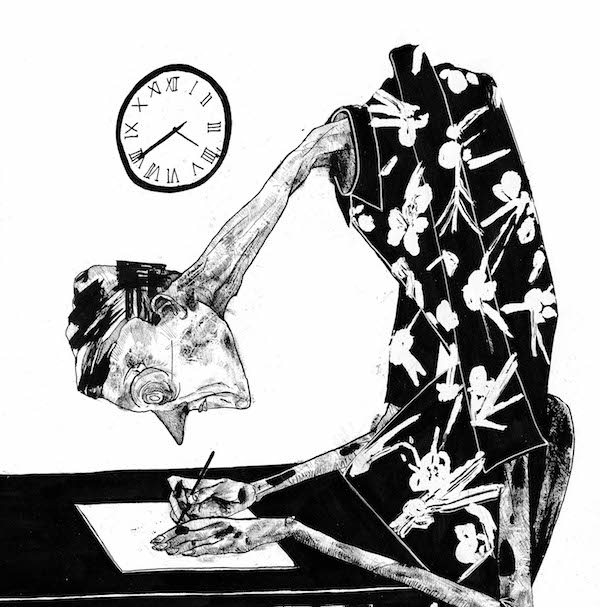 Born in Sheffield, Ian Moore is a graduate of the University of the West of England, Bristol. He uses a process of layering ink to create expressive, textured illustrations.
Born in Sheffield, Ian Moore is a graduate of the University of the West of England, Bristol. He uses a process of layering ink to create expressive, textured illustrations.
December 29, 2017
-
Guest Album Review – “White Light, White Heat, White Trash” by Social Distortion
This guest review was originally part of a music blog project I created called Under The Deer. Since that site won’t be around forever, I’m archiving these wonderful reviews and their accompanying illustrations here. Writer and illustrator listed at end of the review.
Likely a play on The Velvet Underground’s White Light/White Heat, Social Distortion’s White Light, White Heat, White Trash is a coming of age confessional from Mike Ness and the band. From the contrite lead-off single I Was Wrong we get the sense that it’s time to fess up, something that lead singer/songwriter Ness seems eager to do. After spending time in and out of prison and rehab for his heroin addiction, Ness is using the four-year delay since Somewhere Between Heaven and Hell to sing about his pain, but also his awakening spirituality and self-realization.
With Untitled, Ness writes “you helped me hide my shame” and “once in a lifetime, twice in eternity – and nothing else matters anyway.” Is he writing about faith? About divine guidance? It seems so, and his spiritual yearnings continue with When the Angels Sing (a departed loved one?) and Down Here with the Rest of Us. Ness seems aware that he’s in a better place and issues a warning to others with Don’t Drag Me Down – a nitro-powered rocker that is likely as much self-affirmation as it is a warning. Certainly, someone with his history of drug addiction and problems with the law would realize that they were always only a small mistake away from losing it all again.
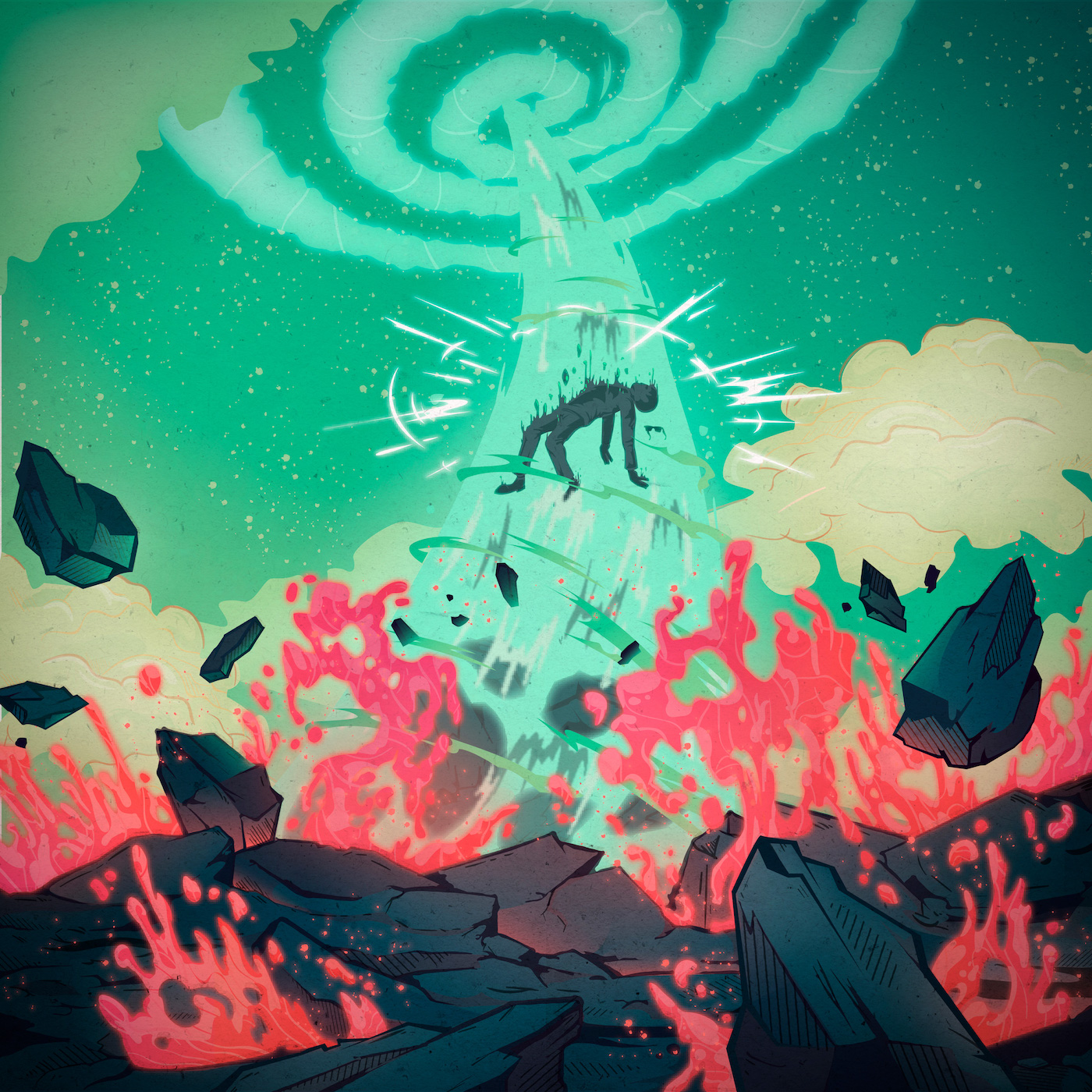
Up until this album, Social Distortion had been a punk band with an American roots influence, with honky-tonk country and rockabilly never far from the surface. With this album however they played it heavier, straighter, and with a tighter sound than ever before. It’s polished for sure, but never overdone.
The painful Dear Lover starts with chords so labored that they almost sound resigned to defeat. Ness’s raspy wail lets us know that yet another relationship has ended in ruins in grinding three chord fashion. “Up against the wall, why does love always have to hurt?” And while I Was Wrong has been crafted for radio, that’s not a bad thing. It not only stands out from the “I’m sick of waiting my turn” pseudo-punk songs of the day, but it opened Social Distortion up to a new demographic. It’s still heavy and hasn’t strayed that far from Social D’s sound. And isn’t Punk Music music that doesn’t care? Ness certainly doesn’t. If it’s not cool to apologize or to wonder if someone up there likes him, he does it anyway.
Ness’s guitar work has never been fuller or heavier than on this album. Most of the guitar sounds as if it’s been recorded on “11” and the feedback is barely under control, especially during his blistering solos. Even cover songs get the Ness guitar treatment. The band has covered songs on past albums, and this one is no different, with an updated version of the Stones’ Under My Thumb driving at double speed.
While the album charted higher than previous albums, mainly on the strength of I Was Wrong, critics have complained that the band had “sold out,” but in fact, this was Social Distortion’s most complex album to date.
Through These Eyes, Untitled, and Down on the World Again are all powerful rockers, and do what Social Distortion does best; show that they don’t fit in. While they may not fit in, the band, or Mike Ness, is taking responsibility for where they are and how they got there. The band is maturing on this album, and while it is still punk, it has a self-awareness that was missing from the first few albums.
Contributors

Scott McKinnon (Oakville, Canada) has been listening to music since the late 60’s starting with a suitcase phonograph that he still misses. He has played guitar for thirty years and doesn’t always hate the sound of his own voice. He road managed a band in the early 90’s and knows that February isn’t the best time to travel the prairies.
Scott currently owns a carpentry business where he reclaims wood and builds furniture.
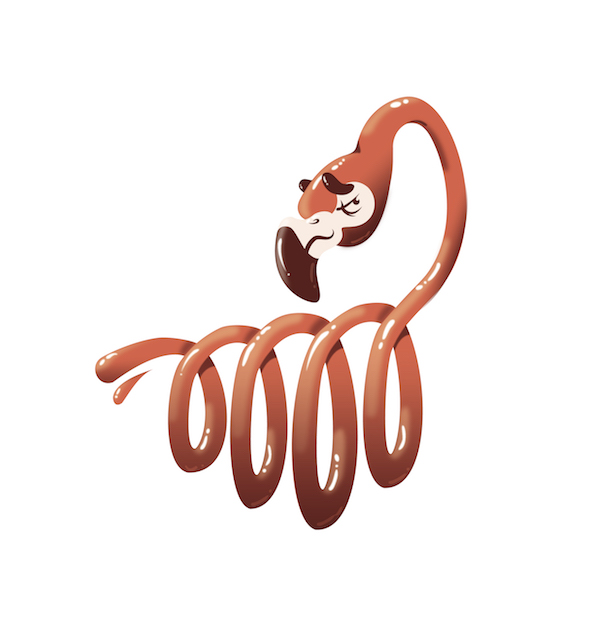
While the Russians are still sticker bombing the Kremlin and the Chinese are secretly busy with making some illegal copies of his artwork, Klok Huis (Eeklo, Belgium) is pushing the limits in illustration circles as well as animation.
December 27, 2017
-
Guest Album Review – “Different Class” by Pulp
This guest review was originally part of a music blog project I created called Under The Deer. Since that site won’t be around forever, I’m archiving these wonderful reviews and their accompanying illustrations here. Writer and illustrator listed at end of the review.
Pulp’s rise to Britpop stardom in 1995 seems, in retrospect, fantastically unlikely.
Oasis and Blur were the two most prominent bands on the circuit, swapping places at the top of the UK singles chart as often as they were trading barbs in the tabloid press. Meanwhile, Pulp, were seventeen years into their career and had barely made a dent in the mainstream consciousness. While they were chalk and cheese on paper, the two biggest bands in Britain had one startling similarity; both offered glamorous facsimiles of what life in England was like in the nineties. Oasis were Northern council estate lads who’d soon be singing about champagne supernovae in the sky, while Blur were Southern rich kids hiring Phil Daniels to lend their mockney ruminations on everyday life a little more street credibility.
Pulp’s Jarvis Cocker – a working-class bloke from Sheffield who’d spent his formative years at a London art school – had done the rounds long enough to know that his band’s upcoming fifth album, Different Class, might just be their last shot at greatness. Taking a leaf out the book of his more political bandmates, Jarvis penned what would become the defining hit of the Britpop movement. Based on the years he spent at college and the class divide that left so many people in mid-nineties Britain feeling so dejected, Common People would rise to number 2 in the UK singles chart back when it meant something. Different Class became one of the most hotly anticipated albums of the year. Even more surprisingly, not only did Different Class manage to live up to expectations despite the hype behind it, it became one of the essential albums of the decade.
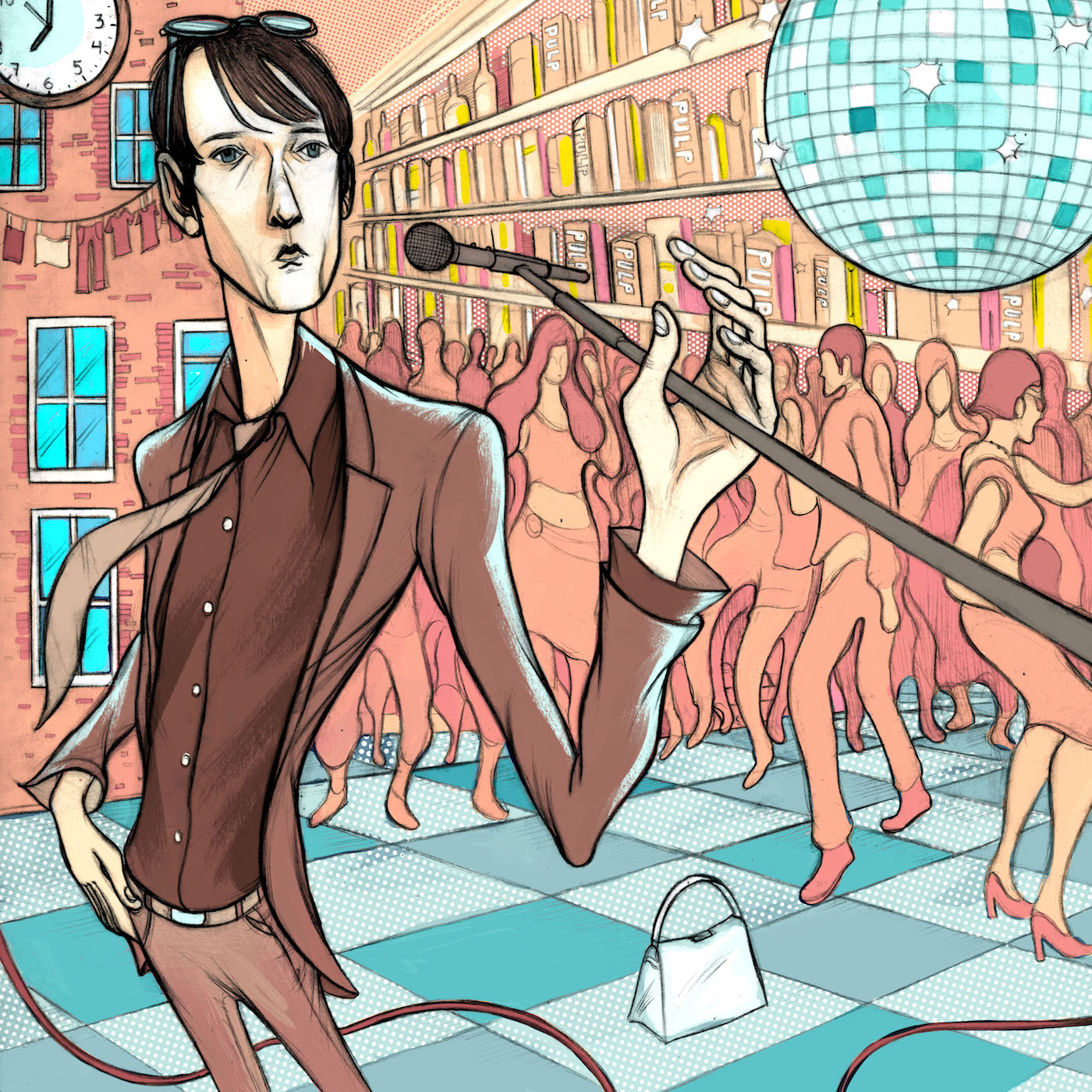
The beauty of Common People is in how the whimsy of the opening of the song – catchy keyboards, a sing-along chorus, and anecdotal lyrics about a chance encounter with a girl at college – suddenly transforms into a tongue-lashing against the upper classes, and their frequent glamorization of working-class life in nineties’ Britain. Wealthy students would live in relative squalor in a rite of passage of sorts, but as Cocker points out in the song, they’d never truly know what it was like to live like the other half because with one phone call to their parents they’d be whisked back to a life of luxury. In the final verse of the song, Cocker lays out the fundamental difference between those struggling to make ends meet, and those playing at it:
You will never understand
How it feels to live your life
With no meaning or control
And with nowhere left to go
You are amazed that they exist
And they burn so bright, whilst you can only wonder why.
The dichotomy at the heart of Common People – a chorus purpose-built to be sung along by groups of people of all upbringings belying a message of division based on social status – is a perfect encapsulation of why Different Class works so well.
Many of the songs are similarly structured, with the unassuming jaunt of their melodies housing deft observations on everyday life in Britain. Disco 2000, which – whether by coincidence or design – bears an uncanny resemblance to the Laura Branigan hit Gloria, is a thoughtful commentary on growing older and pining after a lost love of years previous, the nostalgic effect of which has only been magnified by the fact that the hypothetical future meet-up proposed by the narrator at the turn of the millennium would have occurred seventeen years ago.
Sorted For E’s & Wizz delves into the rave culture of the nineties, and how the friendships one forms in a field in Hampshire while under the influence of illicit substances fade into the ether when the morning comes and the drugs wear off. Something Changed details how the seemingly inconsequential choices people make in their daily lives can, butterfly effect style, lead to immensely important, life-changing moments, while Live Bed Show describes the stagnation of a relationship years down the line through the lens of a once frequently creaking bed:
It didn’t get much rest at first
The headboard banging in the night
The neighbours didn’t dare complain
Oh, everything was going right
Now, there’s no need to complain
‘Cause it never makes a sound.
Anyone who remembers being picked on for being a little different in their youth will likely find a kindred spirit in Mis-Shapes, which touches on similar themes to those explored in Common People from the perspective of the smarter outsiders who might find themselves targeted for abuse by the more stereotypical, loutish members of the working class collective:
We’d like to go to town but we can’t risk it
‘Cause they just want to keep us out
You could end up with a smack in the mouth
Just for standing out, now, really
Jarvis Cocker’s lyrics are a highlight of Different Class, with his wry observations drifting between tragic and amusing in a manner, not unlike Morrissey in his Smiths days, with a similar appeal to those in society that feel left behind by the system or their peers.
While most of the album seems designed to be relatable, I Spy is a cutting revenge fantasy that stands as the darkest moment on Different Class, and one that would presumably serve as the blueprint for much of Pulp’s cantankerous follow-up album, This Is Hardcore. Taking the class war to a frightening extreme, I Spy sees Cocker as a working-class vigilante, sleeping with the wife of an affluent contemporary to exact his revenge for perceived crimes. ‘It may look to the untrained eye/I’m sitting on my arse all day/I’m biding time until I take you all on,’ he spits, before launching into a spiteful tirade at the climax of the song:
You see, you should take me seriously
Very seriously indeed
Cause I’ve been sleeping with your wife for the past sixteen weeks
Smoking your cigarettes
Drinking your brandy
Messing up the bed that you chose together
And in all that time I just wanted you to come home unexpectedly one afternoon
And catch us at it in the front room
Twenty-two years later, Different Class serves as a fitting time capsule, a window peering into mid-nineties Britain and the cultural divide that split the country, but avoids feeling quaint or out of touch as we once again find ourselves torn between two political extremes. 2017 and 1995 are remarkably similar in that regard. A small message in the booklet that comes with the CD version of Different Class sums up Pulp’s mission statement neatly in a few sentences. It reads: ‘Please understand. We don’t want no trouble. We just want the right to be different. That’s all.’ It’s impressive and troubling in equal measure, then, that this is a mantra that still seems relevant and necessary today.
Unlikely prognostications aside, though, Pulp’s Different Class is just a damn good record, that still holds up today because Jarvis Cocker’s lyrical witticisms complement the ear-worm melodies of the songs with clockwork precision. In an age in which anyone with a Spotify account and a mobile phone is the curator of their own listening experience, crafting playlists that whittle down an artist’s discography into just the most enjoyable tracks at a moment’s notice, Different Class is an all killer, no filler album that delivers from start to finish, and requires no such truncation. Oasis and Blur might have been stealing all of the headlines in 1995, but Different Class stands as the defining album of that era.
Contributors

There’s a good chance that while you’re reading this, John McCormick is in his pyjamas with a PS4 controller in his hands. He loves music and movies from the ’80s, considers cheese to be the most important major food-group, and has no regrets about the amount of time he’s spent creating playlists on Spotify.

Daniel Teran is a professional illustrator with extensive experience working with Character Design, Vector Illustration, Drawings (traditional and digital), Editorial Illustration, Commercial Illustration, etc.
December 25, 2017
-
Guest Album Review – “Sound & Color” by Alabama Shakes
This guest review was originally part of a music blog project I created called Under The Deer. Since that site won’t be around forever, I’m archiving these wonderful reviews and their accompanying illustrations here. Writer and illustrator listed at end of the review.
After finding surprise success with their first album, Alabama Shakes released their second studio album, 2015’s Sound & Color, to rave reviews. Front-woman Brittany Howard and the band departed from the blues-soul sound of Boys & Girls to explore a deeper more mysterious sound. Barry Nicholson of NME describes the difference in the album’s writing, saying, “their debut was cast in sepia hues and down-home earthiness, its follow-up is a more kaleidoscopic affair.”
The tracks on Boys & Girls are laden with hearty, soulful influences like Otis Redding. After expressing that they don’t want to “carry the torch” of soul-rock, the band’s sophomore album sheds the essence of the “retro-soul” style to explore a synthy, mystical story. The vibe of the album is reminiscent of the stories told by famed dreamers like Bowie and Zeppelin.
The opening title track sets the tone for the rest of the album. It is an introduction to the new sound and invites the listener to engage by showcasing dreamy xylophone melodies and a softer, wandering performance from Howard. When the listener hears the synthy strings added by Bon Iver’s Rob Moose, they begin to understand the sound they expect from the band is just a little different now.
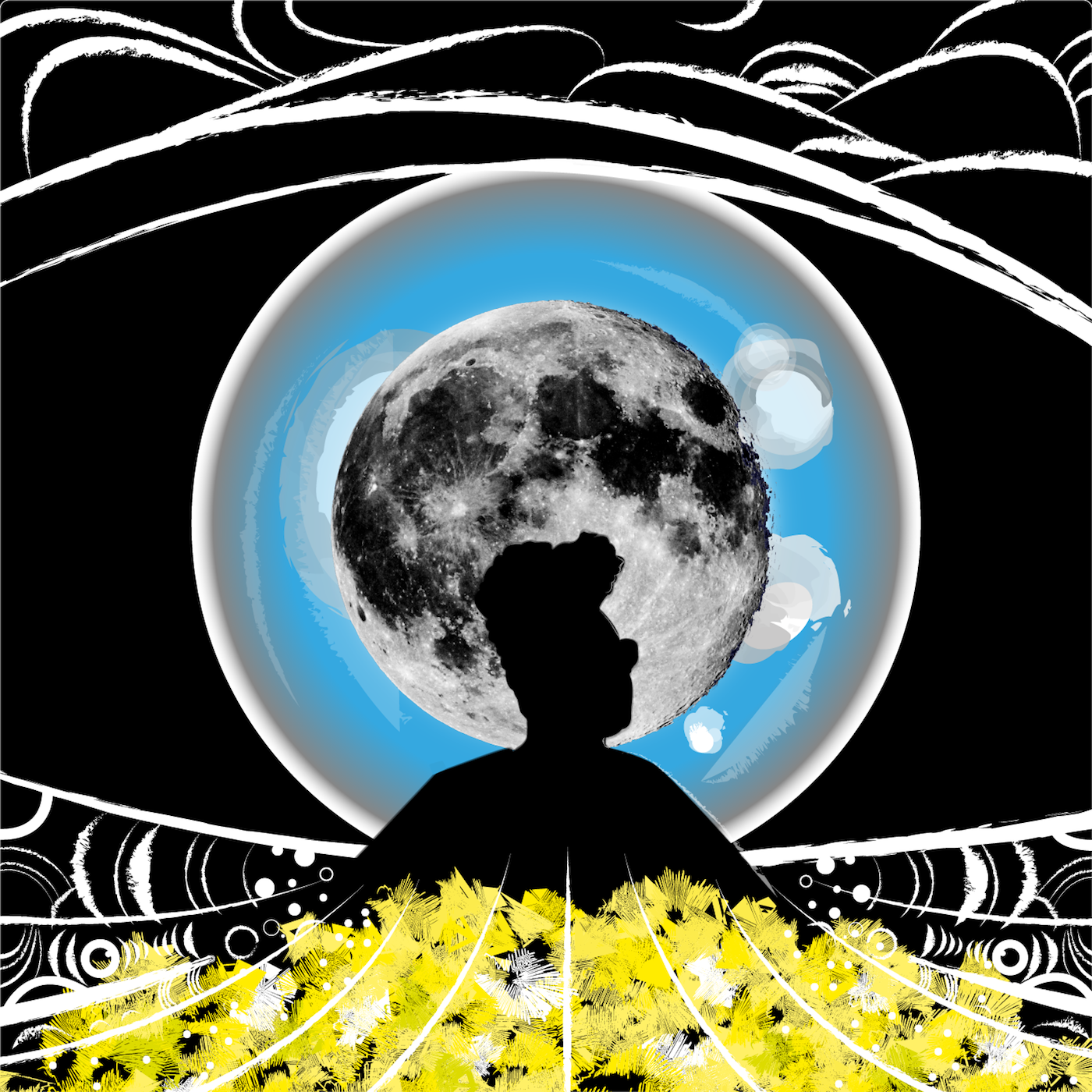
Shoegaze — a reference to a punk rock movement that became popular in the 1980’s — is a masterful track. Fans named the movement’s performers “shoegazers” because of their detached state of performance at shows. This style features heavy feedback, use of effect pedals, and muffled vocals that blend into an overall sound.
Howard’s vocals are more exploratory on this album. She is less forceful and instead offers a subtle build up in each song. After singing in church as a child, Howard has no problem being the singular source of power in a performance. On Sound and Color, she masterfully layers and mixes her voice to match the aura of each song. She still uses her larger than life personality to add depth and interest though. The song Gimme All Your Love is a true showcase of the band’s integration. Howard’s voice yields to trudging a bass solo that leads to a climax that steals the show.
Even though the band is exploring new territory, guitarist Heath Fogg’s style still provides fans with the old-school sound we fell in love with on the first album. His funk grounds the experimental sound and blends beautifully with the organs, strings, synths. The songs on this album take their time to tell their story– and are unapologetic about it.
By taking influence from new places, exploring their sound, and working together, Alabama Shakes created one of the most avant-garde albums of 2015. Rolling Stone notes that “As they grow toward a greatness that does away with others’ assumptions, these proud freaks stay grounded”.
The band invites us as fans to join their journey by remaining humble.
Contributors

Sarah Fletcher was born and raised in Pittsburgh, Pennsylvania. As a legal professional during the day, she feeds her creativity by immersing herself in music at night. She enjoys being a part of the local music scene and checking out as many gigs as she can.

Gabriel Janeiro Grokes is an illustrator, graphic designer, layout editor, guitarist, composer, writer and astrologer. He is an enthusiast of the arts, diversity and the universe.
December 22, 2017
-
Guest Album Review – “Heaven Upside Down” by Marilyn Manson
This guest review was originally part of a music blog project I created called Under The Deer. Since that site won’t be around forever, I’m archiving these wonderful reviews and their accompanying illustrations here. Writer and illustrator listed at end of the review.
Continuing to be considered dangerous in this contemporary, shockproof world is not an easy task. It was not only the unrestrained sonic rush and vulgar aesthetics of Marilyn Manson’s Antichrist Superstar and Mechanical Animals that generated such cataclysmic fame for their creator but also people’s natural openness to shock. Nearly two decades later it’s safe to admit that Manson’s shock value has deteriorated. The true shock lies in the realization that it’s so hard to shock people these days.
So, what’s left for an almost 50-year-old shock-rocker to present to the world on his tenth album, now that his first and foremost weapon has become harmless in the modern world? Well, the answer to that quickly became apparent when I heard him screeching the hooligan chorus of We Know Where You Fucking Live and it spread a naughty smile all over my speakers; He is back, and he remains a threat to all of us. It became even more so with the following track SAY10 when I heard the chorus “You say “God” and I say “Say 10″” – man, I fell in love with that pun right away.
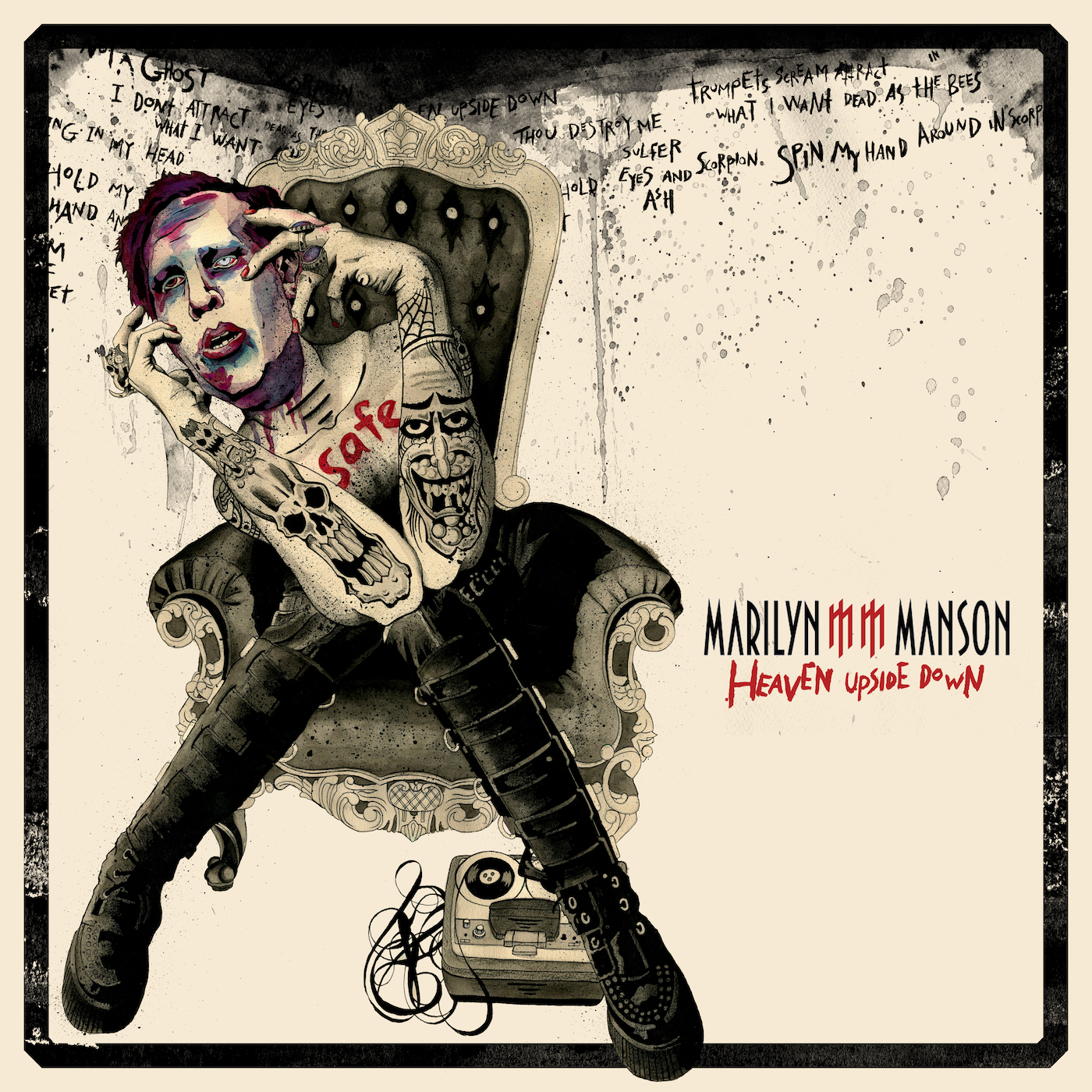
These two tracks were the ones that immediately caught my attention on the album, and while their industrial rock grind is quite indicative of the album’s sonic direction, there is more to it. The post-punk cloak of the 8-minute long Saturnalia has raised a debate among fans as to whether this sound would be a suitable direction for Manson’s future releases.
My personal favorite off the album – Blood Honey – repeats the phrase ”upside down, upside down” more times than the album’s namesake track that follows. As an old fan, I can picture Manson smiling during the mixing of the album, imagining fans looking at their phone screens or the record’s tracklist to make sure that they’re listening to the right track.
All lyrics are written by Marilyn Manson as has always been the case, while all music is composed by Tyler Bates. The album’s overall sound can be described as heavy industrial metal and, while the absence of John 5 and Twiggy Ramirez from the composition credits might fuel the old fans with a hint of negative predisposal, the album solidifies Manson’s comeback – initiated by 2015’s The Pale Emperor – after a decade of distinct artistic decline. It’s the heaviest version of the vocalist that we’ve heard for a long time.
Heaven Upside Down is pure, untamed Marilyn Manson ladies and gentlemen; the very same person who was once considered a lyrical and visual punch against all social conformity today seems like a man with a fork in a world of soup. No obvious Trump remarks; no easy commentary on minority oppression. No safe annotations on feminism. The issues of today’s western civilization are trending all over the Internet, causing massive comment wars. This, of course, would have been an obvious pick for the lyrical frame for an album that is seemingly an attempt to bring Manson’s brand back into the mainstream world. Nevertheless, Marilyn Manson won’t go down that convenient road: instead, he chooses to whistle that same old religion-attacking, drug-advocating, goth-sexy song of his.
One could claim that he plays safe, chewing over his familiar themes. I say that he dares to be culturally irrelevant, going through the ordeal of artistically resurrecting himself without any deliberated, pretentious tricks.
Danger and shock were the foundation of Marilyn Manson’s cultural impact back in the 90’s. There is no more space for shock and danger in music, but there is plenty of space for this middle-aged man’s angry new album on my record player.
Contributors

Nektarios Oikonomakis is a freelance music marketer / VA. He has worked as a radio host and a music journalist. He lives in the place where democracy was born, Athens, Greece.

Daniel Greenhalgh is an Irish illustrator/designer currently living and working in Bucharest. His illustration style is heavily influenced by German expressionist film, especially Wiene’s Dr. Caligari, but also modern expressionistic directors like Leos Carax (the atmospheric shadow play of ‘Boy meets Girl’) and David Lynch (the absurd characters that somehow appear natural within the world he has created). The use of traditional mediums such as ink and watercolor gives both his illustration and typographic work a sense of texture, and quite often a grunginess.
December 20, 2017
-
Guest Album Review – “Ys” by Joanna Newsom
This guest review was originally part of a music blog project I created called Under The Deer. Since that site won’t be around forever, I’m archiving these wonderful reviews and their accompanying illustrations here. Writer and illustrator listed at end of the review.
When it comes to music, it seems that everyone’s a critic, even with near-perfect albums like Joanna Newsom’s 2006 Ys (pronounced eees or yeeesh). This 5-track, exquisitely crafted work by the singer-songwriter-harpist not only holds its own as an outstanding example of her artistic fortitude; the addition of a full-piece orchestra (arranged by Van Dyke Parks) creates the kind of aural opulence rarely achieved in any musical context, let alone via a squeaky-voiced, 20-something folk harpist.
While for the most part, the album was highly acclaimed, people have accused the album – and by extension, Newsom – of being self-indulgent, which begs the question: What creative masterpiece isn’t a little self-indulgent? If creativity stems from deep reflection, imaginative courage, and, yes, probably some emotional neuroses, it must, by definition, be self-indulgent.
But what makes a great piece of art is its ability to reach the audience. And while this album may, at first, seem a little bit “out there” (at least lyrically), one only has to listen for a moment to understand its depth. It is rife with purpose, both thematically and in the way it shows Newsom’s mastery as a poet and musician.
Ys transports us to other lands–the sky, the sea, the forest–then it sweeps us back home again, a thematic rhythm echoed through composition: we’re away, and she’s almost lost us (but it’s still fascinating), and suddenly we’re right back with her again.
We’re perplexed…we get it.
We’re adrift…we’re grounded.
We’re dreaming…we’re awake.
And so go the undulations of time, love, loss.
Ys is an otherworldly album, lyrically, structurally and aurally. It is at once not of this earth and incredibly relatable. Her inner journey is strange, each verse turning a new corner with unusual imagery. It’s an open invite.
Newsom is not trying to be “abstract;” she just wants us to listen.
Each song pulls us along through intricate adventures accentuated by deliberate pacing and cadence. Orchestral breaks allow us to rest and then listen more closely to lyrics, with one of the first notable gaps highlighted by a pared-down tempo in Emily:
You came and lay a cold compress upon the mess I’m in
Threw the window wide and cried, “Amen! Amen! Amen!”
The whole world stopped to hear you hollering
You looked down and saw now what was happening.
The lines are fading in my kingdom
(Though I have never known the way to border them in).
Here we again are brought from some wild outdoor spectacle and into a scene so simple it’s almost pastoral: she’s in a room, sick in bed, her sister at her side. It’s a vulnerable moment that reminds us that she is not an ethereal, otherworldly being: she is mortal. She’s just like us.
And she wants us to know her.
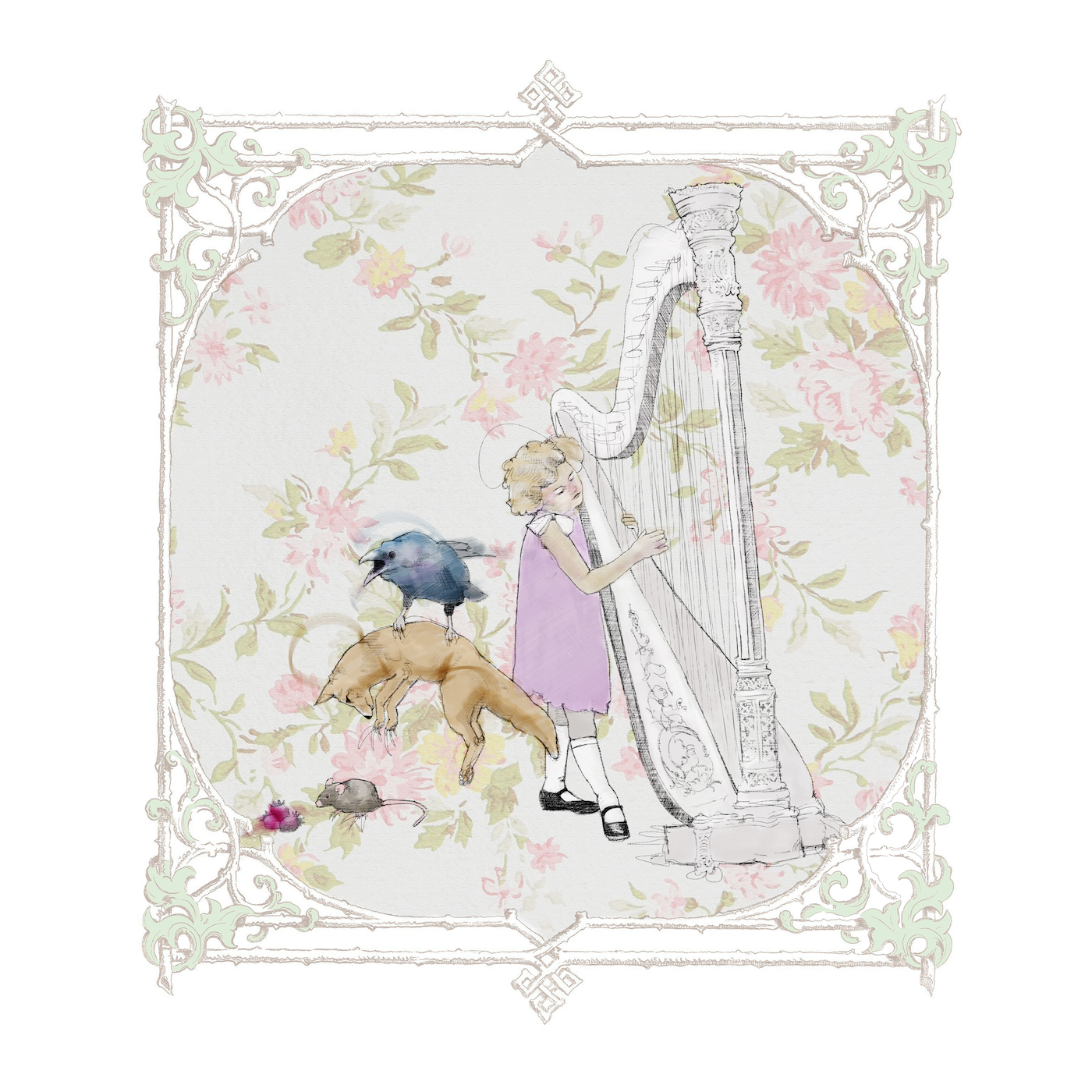
The album continues to wax and wane through crescendos (and diminuendos), always moving, often dramatic. Every verse turns a corner into a new scene, and this happens so frequently that it’s hard to keep up, but not in a bad way. Ys is a cozy blanket, a bizarre adventure, a wise tale, an intricate dance.
Some critics balk at her voice, and it’s true that it’s not easy at first. But it’s so unabashedly raw that we must take it as is. As something both childlike and urgent, it’s integral to her tapestry. And we have to remember that she is, after all, a harpist and storyteller who is using her voice as an instrument. It’s a good reminder of how important it is to listen to the heart behind the voice.
Sawdust and Diamonds is equally as entrancing as the rest of the album, but without orchestral backing, it’s fine proof of how well she can hold her own, of that unearthly space she occupies as both artist and human. It’s the kind of thing that makes us believe in the muse, wondering at every turn, “where the hell does she come up with this?” and keeping us fascinated as we join her in that other place and time.
Her ability to lead us through shifting landscapes with such ease is clear once we get to Sawdust, where she is a lost mariner where the bell, “tolls for thee,” on her way back to shore. She returns from the shifty, uncertain time and back to her love, despite their relationship being as fleeting as “a sandcastle that the gibbering wave takes.”
A particular image stands out towards the end of the song, as something that seems so much like her: a doe-eyed, delicate creature born with innate wisdom. This creature is tenacious, awake, yet somehow unable to escape the burden of love that defines us as humans.
I wasn’t born of a whistle or milked from a thistle at twilight
No I was all horns and thorns sprung out fully formed, knock-kneed and upright.
So: enough of this terror, we deserve to know light
And grow evermore lighter and lighter
You would have seen me through
But I could not undo that desire
The fourth song, the 16-minute Only Skin, carries us through spectacular orchestral arrangements which illustrate sharp emotional landscapes. As with her other songs, each verse is more resplendent than the last. The delicate integration of poetic structure, vocal cadence, tempo changes and signature shifts work with the music to fly us from ocean to cabin to prairie. We are next to our lover, then distant; yearning, then content; alone, then connected.
Press on me,
we are restless things.
Webs of seaweed are swaddling.
And you call upon the dusk of the
musk of a squid:
shot full of ink, until you sink into your crib.
Rowing along, among the reeds, among the rushes,
I heard your song, before my heart had time to hush it!
Smell of a stone fruit being cut and being opened.
Smell of a low and of a lazy cinder smoking
And when the fire moves away,
fire moves away, son.
Why would you say
I was the last one?
This is not just any old album: it’s a story, a painting, a world unto its own. It’s a richly bittersweet testament to the temporary nature of all that is life, and thank goodness we have the pleasure of experiencing Ys again and again. In its warmth and complexity, Ys reveals more each time we give it a listen, perhaps akin to the kind of relationship most could only dream of.
Contributors

Renée Picard is a freelance writer-editor who leads life with a soft-but-fierce heart.
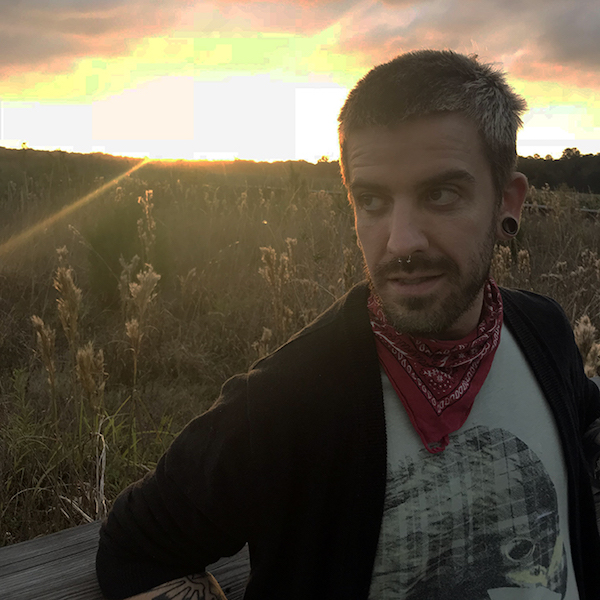
Jonathan M James In a single brushstroke Jonathan blends the familiar and the grotesque to create an abstraction that defines the complexity of the human experience; often resulting in an isolated element that exists in a single moment.
December 18, 2017
-
Guest Album Review – “Darkness on the Edge of Town” by Bruce Springsteen
This guest review was originally part of a music blog project I created called Under The Deer. Since that site won’t be around forever, I’m archiving these wonderful reviews and their accompanying illustrations here. Writer and illustrator listed at end of the review.
The first time I remember hearing Darkness on the Edge of Town, was on a September Friday in Frank Vultaggio’s Audi on the way to a college football game in Philadelphia in 1978.
Surely, I’d heard it before then. The album was released in June of that year.
But it’s the memory of that night that endures. The jugs of beer on the floor in the back of the car. The scream-along to the chorus of Badlands, the album’s opening salvo, followed by the unyielding guitar and dark narrative of Adam Raised a Cain and on through the rest of the cassette and two of our college-days anthems, Prove It All Night and The Promised Land.
Later that night, we watched Springsteen protégés Southside Johnny and the Asbury Jukes perform a post-game concert in the end zone before the hour-drive back with Darkness as the brooding midnight soundtrack.
It would be dishonest to say the album became my favorite that night. It took years before I came to appreciate it as the greatest of the great Springsteen records.
I had to live with those stories, and their characters and their unflinching look at everyday life, something no rock record had asked me to do. I had to sing along to those classics at one Springsteen show after another. The songs at the heart of the album — Badlands, Prove It All Night, The Promised Land and Darkness on the Edge of Town — have been concert staples for nearly 40 years for a good reason.
Like the best art, what the songs on Darkness mean to me has changed over time.
The album I first heard in 1978 evokes different emotions now than it did then or in 1997 when my children were born, or 2003 during The Rising Tour, or 2016 during The River Tour. It got me through breakups and celebrations, pain and joy, and more long road trips than I can remember.
A song like The Promised Land offered an unbroken horizon of possibilities hearing it in 1978. By the Rising Tour in 2003, it was a balm, the possibility of redemption. Now, it’s a reminder to still believe, to still explore, and to be present for the ride, a celebration of the hope central to life. It’s my favorite song, and it never grows old.
I’ve seen Springsteen more than twenty times. Each show is as rousing, redemptive, reflective, and joyous as the first. And, despite its dark lyrics, The Promised Land is a defiant, fist-pumping anthem at every show, testimony to the brilliance of the writing on Darkness.
There’s a dark cloud rising from the desert floor
I packed my bags and I’m heading straight into the storm
Gonna be a twister to blow everything down
That ain’t got the faith to stand its ground
Blow away the dreams that tear you apart
Blow away the dreams that break your heart
Blow away the lies that leave you nothing but lost and brokenhearted
The dogs on Main Street howl,
’cause they understand,
If I could take one moment into my hands
Mister, I ain’t a boy, no, I’m a man,
And I believe in a promised land
I believe in a promised land…
Throughout Darkness, Springsteen pits the hard reality of the working life (listen to Factory) and the bitter setbacks of his weathered characters, against the thin line of hope and possibility that sends them trudging into each new day.
“You spend your life waiting for a moment that just don’t come,” Springsteen sings on Badlands, the charging opener. But at the end, he’s still finding hope. “I believe in the love that you gave me,” he says. “I believe in the hope that can save me. I believe in the faith and I pray that someday it may raise me about these badlands.”
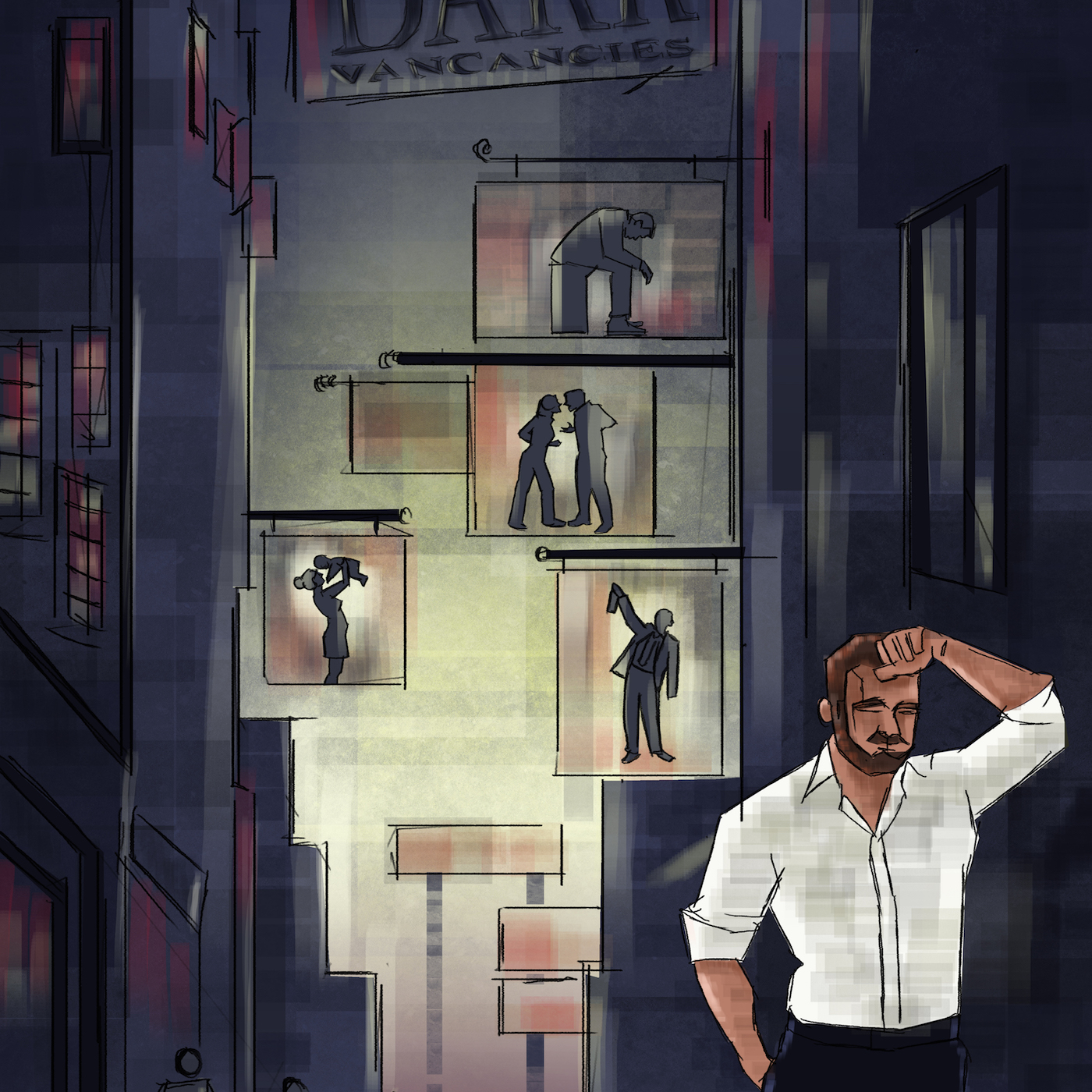
Listen to the lonesome moan at the beginning of Something in the Night for a narrator who finds the things he loved crushed and dying in the street, but continues chasing something in the night.
Sit alone and ponder the lyrics of the daring ballad, Racing in the Street:
Some guys they just give up living
And start dying little by little, piece by piece
Some guys come home from work and wash up
And go racin’ in the street.
On many of the album’s songs, the darkness grudgingly surrenders to the innocent belief there is something better within reach, whether it’s the promised land, whatever that may be, the escape of racin’ in the street, or the resolve to prove it all night. Throughout, the music and the lyrics are stripped down, serving the stories. Gone is the Wall of Sound from Born to Run, his breakthrough. Gone are the broad sketches of his early albums; for these songs, Springsteen zooms in on the characters. Their stories are as carefully sequenced as loosely-connected chapters or a novel, exploring work, love, family and our darkest fears and deepest hopes. Springsteen knows the journey isn’t linear or logical. Merely surviving can be a burden. But to survive is to have hope.
Springsteen was 27 and in the midst of a writing frenzy when he made Darkness. More than 40 songs were recorded during the sessions for the album, including Because the Night, which became a hit for Patti Smith, and Fire, a hit for The Pointer Sisters. He consciously left those off the record so they would not overshadow what he was trying to do. “I began to listen seriously to country music around this time,” Springsteen wrote in an essay two decades after the album’s release. “I discovered Hank Williams. I liked the fact that country dealt with adult topics, and I wanted to write songs that would resonate down the road.”
He’d long been into film noir and that became an even greater influence with films like John Ford’s “The Grapes of Wrath.” The album was written and recorded during the punk frenzy and those influences found their way into the songs. He culled the songs to the toughest, songs he says still form the philosophical core of what he and the band do today.
“Darkness on the Edge of Town,” he wrote, “dealt with the idea that the setting for personal transformation is often found at the end of your rope.”
On most of the ten songs, the characters are unnamed. They’re everyman and everywoman, you and me, our neighbors and friends. So we frame the meaning of those songs with our particular windows on the world, taking from them what we need.
In the end, Darkness is the rare album that examines what it’s like to be an adult who manages to move forward haunted by the ghosts of their regrets.
“Most of my songs are emotionally autobiographical,” Springsteen says. “You’ve got to pull up the things that mean something to you for them to mean anything to your audience. That’s how they know you’re not kidding.”
Looking back in 2010, Springsteen wrote to fans that he hoped he’d “written something that would continue to fill me with purpose and meaning in the years to come, that would continue to mean something to me and to you.”
For me, at least, he’s fulfilled that considerable ambition, creating a layered album that endures day after day, year after year.
Contributors

Jim Morrison has flown barrel rolls with the Navy’s Blue Angels (he didn’t barf), climbed and slept overnight in a 243-foot-tall redwood (he didn’t fall), and gone one-on-one with Muhammad Ali (he didn’t flinch). His stories have appeared in Smithsonian, The New York Times, The Wall Street Journal, and dozens of others.

Rebecca Arnold aka Bex is a Mama Bear, freelance story artist and illustrator, and Universe enthusiast.
December 15, 2017
-
Guest Album Review – “Soft Sounds From Another Planet” by Japanese Breakfast
This guest review was originally part of a music blog project I created called Under The Deer. Since that site won’t be around forever, I’m archiving these wonderful reviews and their accompanying illustrations here. Writer and illustrator listed at end of the review.
With her second album Soft Sounds from Another Planet, Michelle Zauner, better known as Japanese Breakfast, re-emerged with a uniquely experimental pop record, summoning influence from a hurricane of loss, grief, changes in location, failed relationships, raw and playful sexuality, and the opportunity to tour with recently reunited shoegaze legends Slowdive.
Originally from Oregon, she moved to Philadelphia, where she quickly established popularity fronting the band Little Big League. After releasing two albums, she called it quits to return home, where her mother had died of cancer. Her debut studio album, Psychopomp, came soon after, marking both her return to music and Philadelphia’s flourishing music scene. As a New Yorker, I remember first hearing her album and enjoying it solely as a cute, lo-fi, pop album. However, the hilarious lyrics, the undiluted sexuality, the childlike playfulness, and a sort of underlying melancholy permeating the album, inspired further listening.
The songs Heaven and Everybody Wants to Love You could be heard hummed by a passing stranger in the middle of the night in Bushwick. I saw her three times in New York City, the last time being at a tiny venue called Baby’s All Right, which sold out quickly. The crowd knew every word, sang, danced, moshed, and reveled in the glory of a much-anticipated show by an artist effortlessly capturing universal yet deeply personal feelings in an irresistible way.
I saw her again at the Music Hall of Williamsburg a year later, shortly following the release of Soft Sounds from Another Planet. The woman I saw perform on that stage had become a grown woman, accomplishing more than most musicians hope for in their entire lifetimes, despite the tragedy of the loss of her mother. It was a far more somber, meaningful, and ultimately more fulfilling experience than previous times I’d seen her. Although a few tracks from Psychopomp brought back memories of a time a one year earlier when NYC was practically her second home, and the carefree vibe or her shows could be felt, it was clear that her new material was not meant to fit within that post-punk revival, poppy indie rocker scene.
Although Michelle Zauner had contemplated quitting music entirely after Psychopomp, the surprising reception of that album eventually landed her a spot supporting the newly reunited Slowdive on tour, a spot most musicians would kill for. Although their influence on Softer Sounds from Another Planet is undeniable, this is still Zauner’s record.
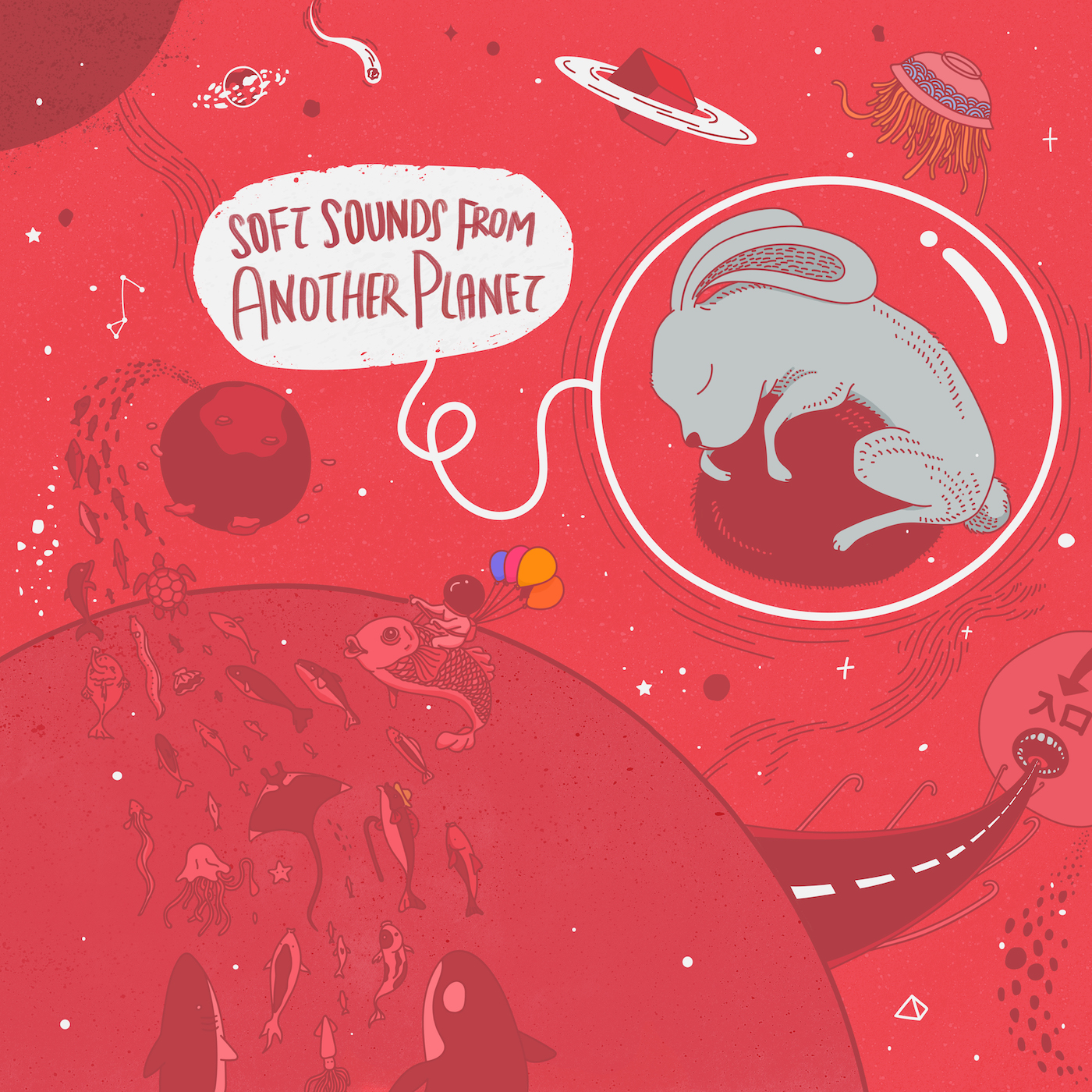
With this album, comes a polished, beautifully produced, experimental pop record, which sounds as if it was recorded in space, complete with shooting stars flying by, planets and galaxies groaning from far distances, stars dying and being reborn, and mysteriously strange sounds emanating from menacing black stars. In other words, meticulously crafted pop music, featuring dreamy synths, emotionally satisfying vocals in the forefront, skilled rhythmic drumming driving everything forward, and criminally underrated bass lines tying everything together into near sonic perfection.
Despite the otherworldly sounds, the focus remains on Zauner’s experiences here on Earth, for example, a relationship where her efforts to please her partner go unreciprocated. On the track Boyish, the lyrics “I can’t get you off my mind, I can’t get you off in general” are a perfect example of the sad yet clever wordplay Zauner is best at. Musically, the song ends with a solo that mirrors the sentiment of the song exactly. The following track, 12 Steps, comes closer to her previous album, building up quickly and hitting the listener with a surprisingly old-school sharpness in her guitar tone as she sings “tell me I can’t blame you, we let love run its course and it’s a little bit lonelier, I don’t blame you, we let love run its course and it’s a little bit hard…”
The first track, Diving Woman, will come as a bit of a shock to those who have been following her career for a couple of years. While Psychopomp featured playful moments it almost felt like she hadn’t quite yet processed her mother’s death. You can sense in this opening track she’s grown more than most musicians do in a lifetime. The contrast is as startling as the lo-fi grittiness of the first album compared to the polished beauty in Softer Sound’s production. Zauner wants it all, and it’s obvious she’s turned all of her grief and suffering, along with unexpected happiness, into an album that’s sublimely produced. It draws you into her strange world over the journey of twelve songs.
Softer Sounds is an album that, because of its unique circumstances, transcends its scene, one full of artists like Porches, Alvvays, Frankie Cosmos, or fellow Philadelphian Mitski. Although I respect those artists, no album has surprised me by displaying such immense, unprecedented growth as an artist. Think about Grizzly Bear’s Yellow House, the following tour with Radiohead, and then how Veckatimest changed the landscape of the indie world at the time. Unlike Grizzly Bear, I believe instead of changing her current scene, she has created a record different from anything heard before. It’s the perfect time capsule of the later 2010’s on the East Coast, where post-punk and shoegaze’s revival dominate local venues, while at the same time providing a stunning-self portrait of Michelle Zauner’s soul.
Contributors

Alex Khan is originally from Kansas and is now trying to make it as a copywriter, branding consultant, and musician in NYC
.

Choon is a freelance illustrator and Star Wars geek.